Best travel destinations to see by water

Before you hop on a flight and book a land package for your next vacation, consider instead what you might be able to see from the water on a ship. Traveling the world's vast oceans and waterways offers unrivaled views of some of the most magical destinations around the globe.
While you can reach most of these locales by plane, you may decide that the best way to see them is from a panoramic viewpoint at the bow of a ship. From remote vistas at the bottom of the world to stunning coastal scenes in southern Europe, these seven destinations will transport you to some of the most scenic places to see by water.
For cruise news, reviews and tips, sign up for TPG's cruise newsletter .

Glacier Bay National Park and Preserve, Alaska
Located in Alaska's Inside Passage, Glacier Bay National Park and Preserve is a bucket list destination best viewed from its icy glacier waters. Much of the vast interior of the park's 3.3 million acres is composed of water and mountains covered in dense rainforest — and most of it is not accessible by road or hiking paths — so the ideal way to see the park is from a cruise or expedition ship or tour vessel.
Even large cruise ships spend a day traversing these pristine waters where you'll watch — and hear — ice calving from the brilliant blue glaciers. Grab your binoculars and you might be able to see bald eagles flying overhead or catch a glimpse of brown bears and mountain goats along the shoreline.
Glacier Bay is also a humpback whale sanctuary, so keep a lookout for these majestic, endangered animals — some as large as 50 feet in length and weighing up to 40 tons. Park rangers board each ship to provide commentary throughout the day and assist with wildlife sightings for whales, harbor seals, sea otters, sea lions and various species of shorebirds.
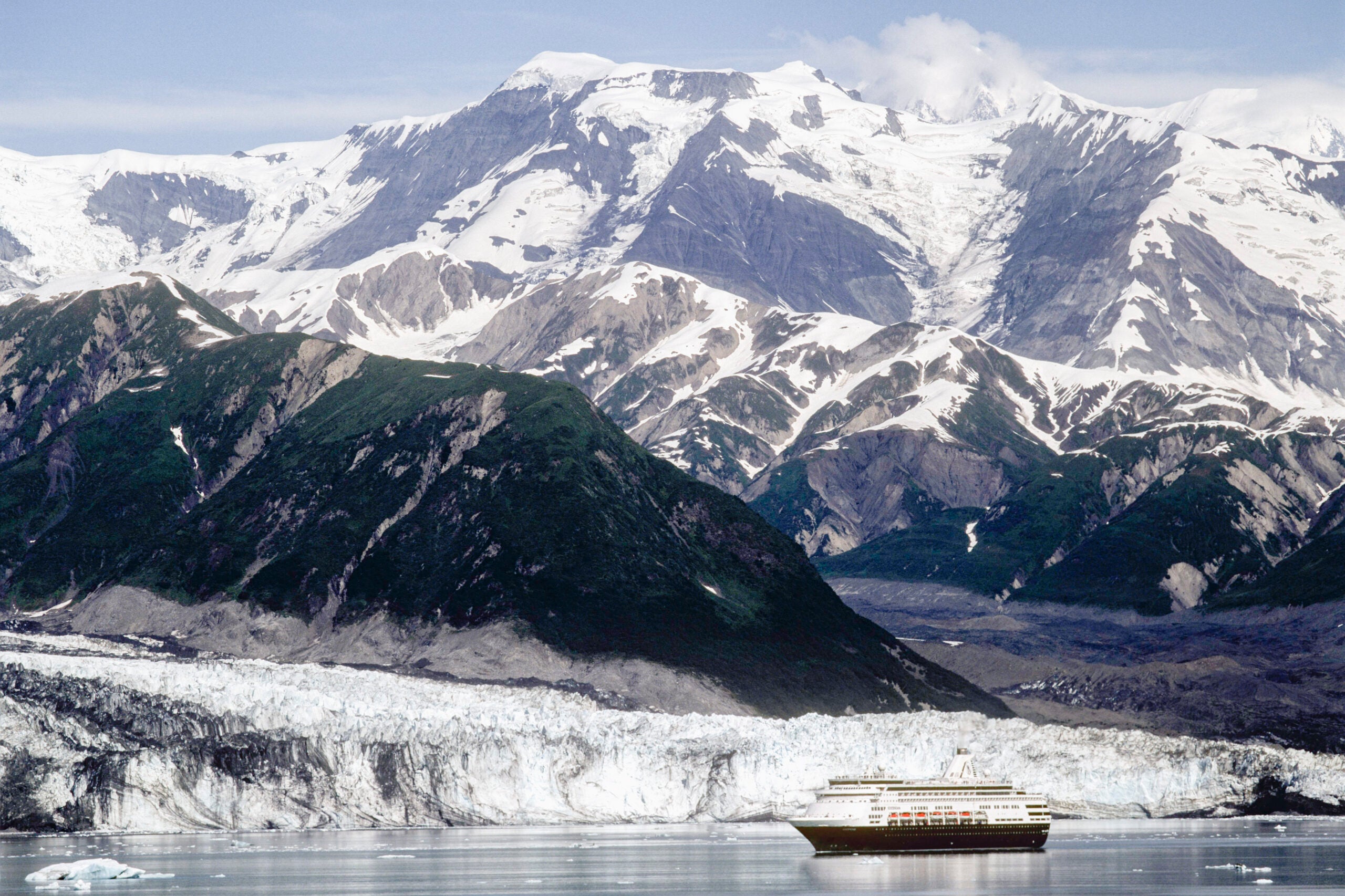
Related: Alaska cruise guide: Best itineraries, planning tips and things to do
The French Riviera
The coastal ports along the French Riviera offer some of the most dramatic and enchanting scenery in the world. There's nothing like sailing into Monaco and seeing Monaco-Ville, the Old Town, perched atop a 203-foot-high headland and the Oceanographic Museum rising out of the cliffside.
Known for its "lifestyles of the rich and famous," Monaco boasts yacht-filled marinas, palatial resorts and homes, winding roadways and hairpin turns that are home to the Monaco Grand Prix — all surrounded by the rugged cliffs of the Alps. While the glamorous scenery is beautiful by day, you won't want to miss the view of this destination when it's lit up at night.
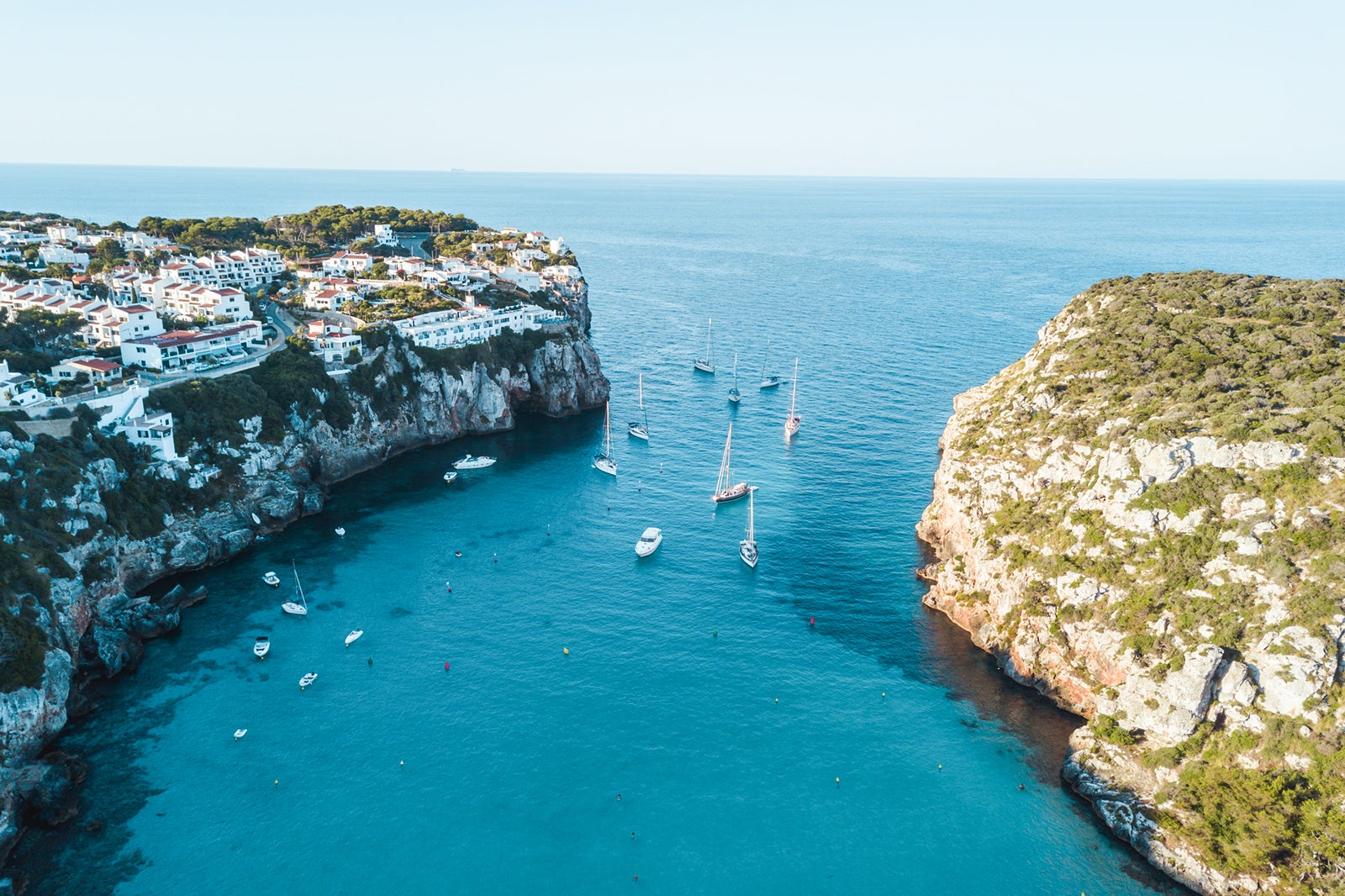
Related: Western Mediterranean vs. Eastern Mediterranean cruises: Which itinerary will I like more?
Hawaii's Napali Coast
Hawaii 's Napali Coast spans 17 miles on Kauai's North Shore along the Pacific Ocean. The landscape looks much as it has for centuries with its pristine, remote beaches, jagged peaks, imposing cliffs as high as 4,000 feet, and waterfalls cascading into lush green valleys that end at the sea.
While there is an 11-mile hiking trail in Napali Coast State Park — the Kalalau Trail — that's reachable via Haena State Park, the optimal way to view the majestic scenery is from the sea or by air. Your cruise ship may plan a cruise-by of the spectacular coastline, but to explore the marine life and sea caves along the coast, take a snorkeling tour to Nualolo Reef. Here you'll have incredible views below the water and from the boat with a backdrop of the emerald green mountains and waterfalls.
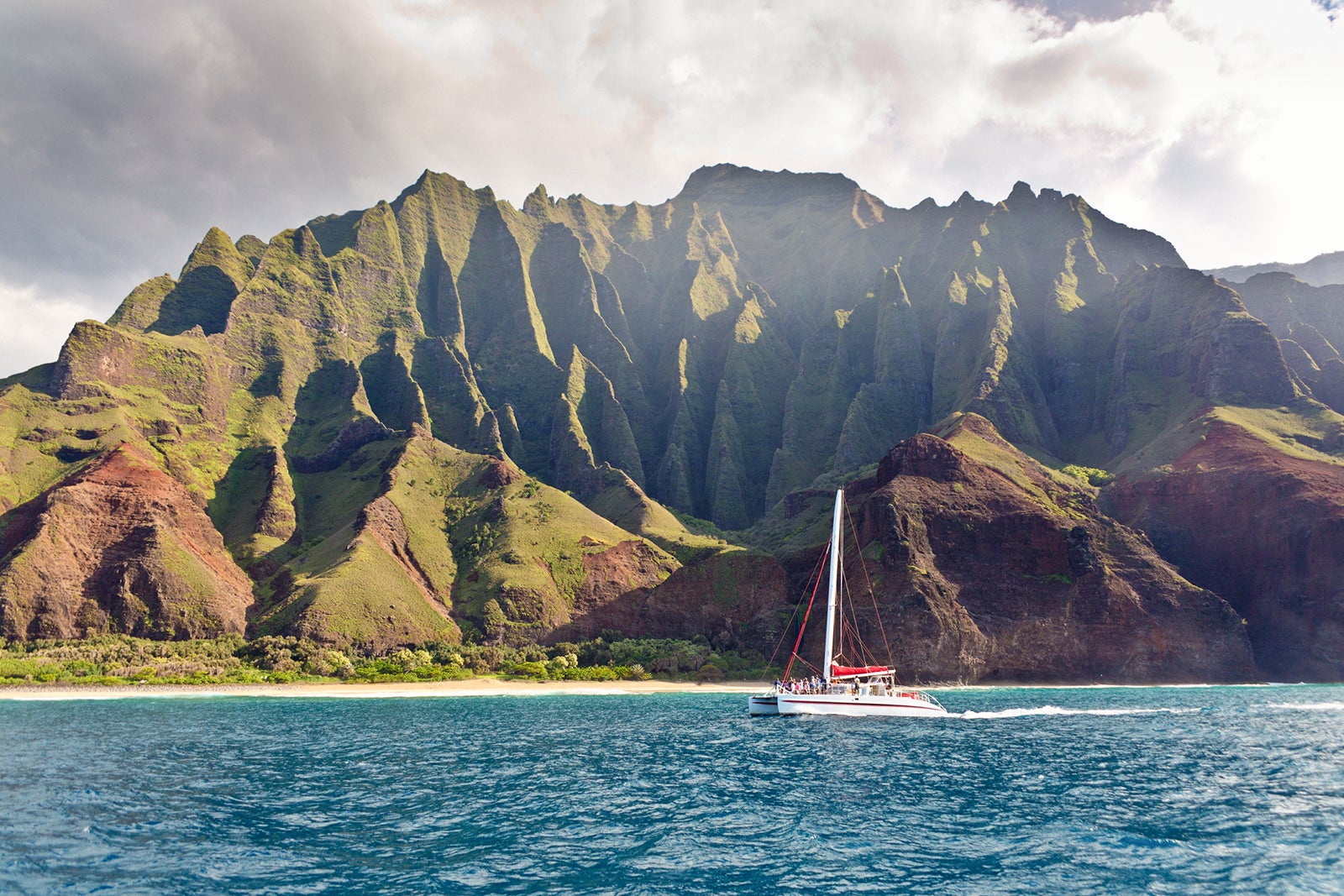
If you're cruising to Istanbul, you'll arrive by one of the world's most famous waterways, the 37-mile-long Dardanelles. This narrow strait separates the continents of Europe and Asia and is the only waterway between the Aegean and Marmara seas. During Classical times, the Dardenelles was known as Hellespont and the ancient city of Troy was situated along the Asian shoreline.
Today, you'll pass hillsides, fields with olive groves and castles and strategic fortifications like the Kilitbahir Fortress as you sail. Once you reach the Bosphorus, the Golden Horn and Istanbul, the seven hills of the ancient city and the minarets of the magnificent Suleymanlye Mosque come into view. You might even hear a call to prayer in the background.
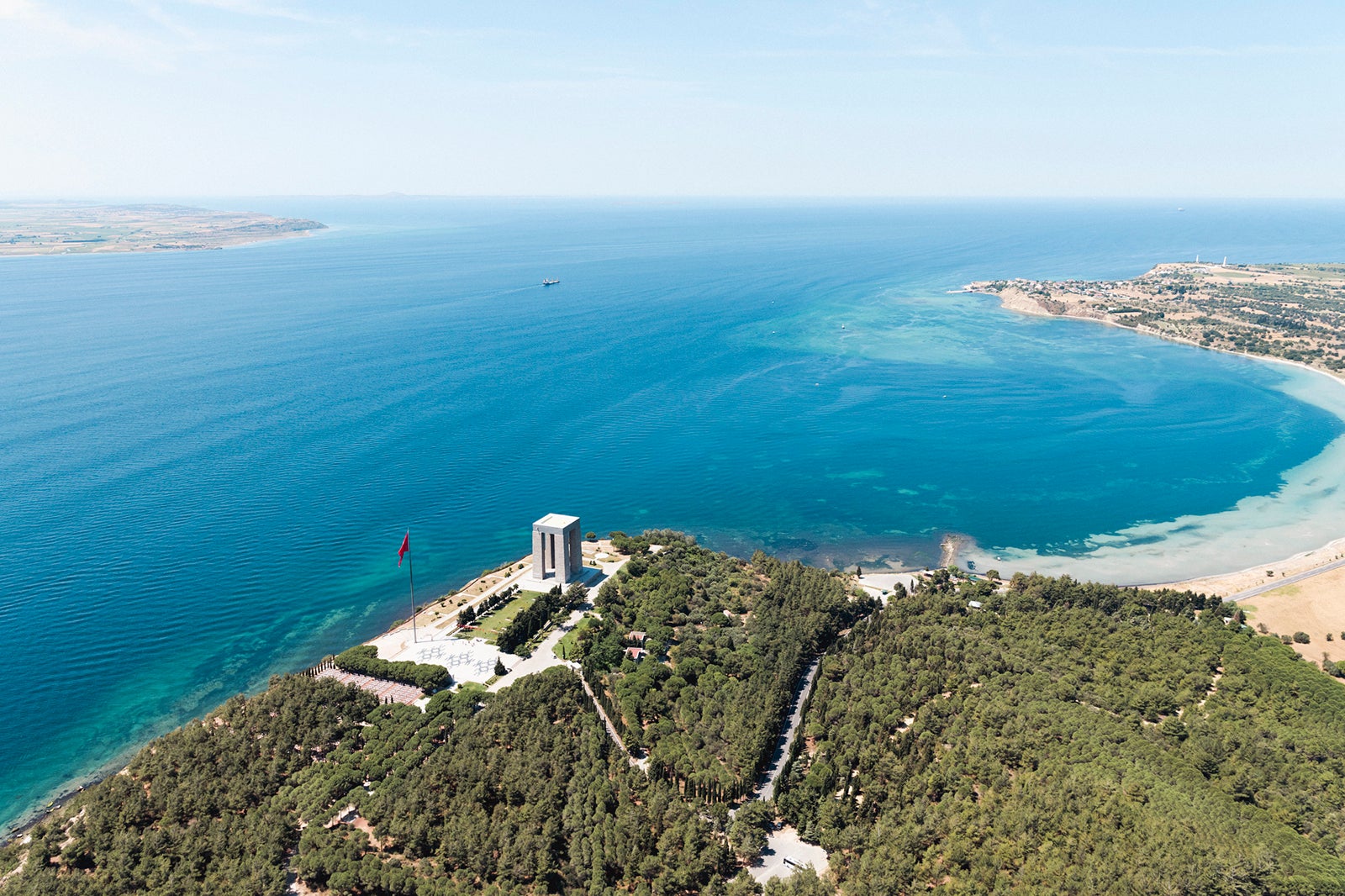
Related: Mediterranean cruise guide: Best itineraries, planning tips and things to do
Norway's fjords
Coastal Norway is home to more than a thousand fjords boasting astounding natural beauty, with calm blue waters from the sea contrasted with jagged towering cliffs. It's hard to imagine that these rocky perches were once home to farmers — and still are in some places — as you sail from one fjord to another, admiring one of Norway's best-known attractions.
One of the most iconic fjords is the UNESCO-protected site of Geirangerfjord. Created by glaciers that carved out the fjords and mountain summits, Geirangerfjord has seven waterfalls, including the best-known Seven Sisters and Bridal Veil falls. For a closer look from the water's surface, plan to take a kayak, or go on a fishing or RIB Boat tour.
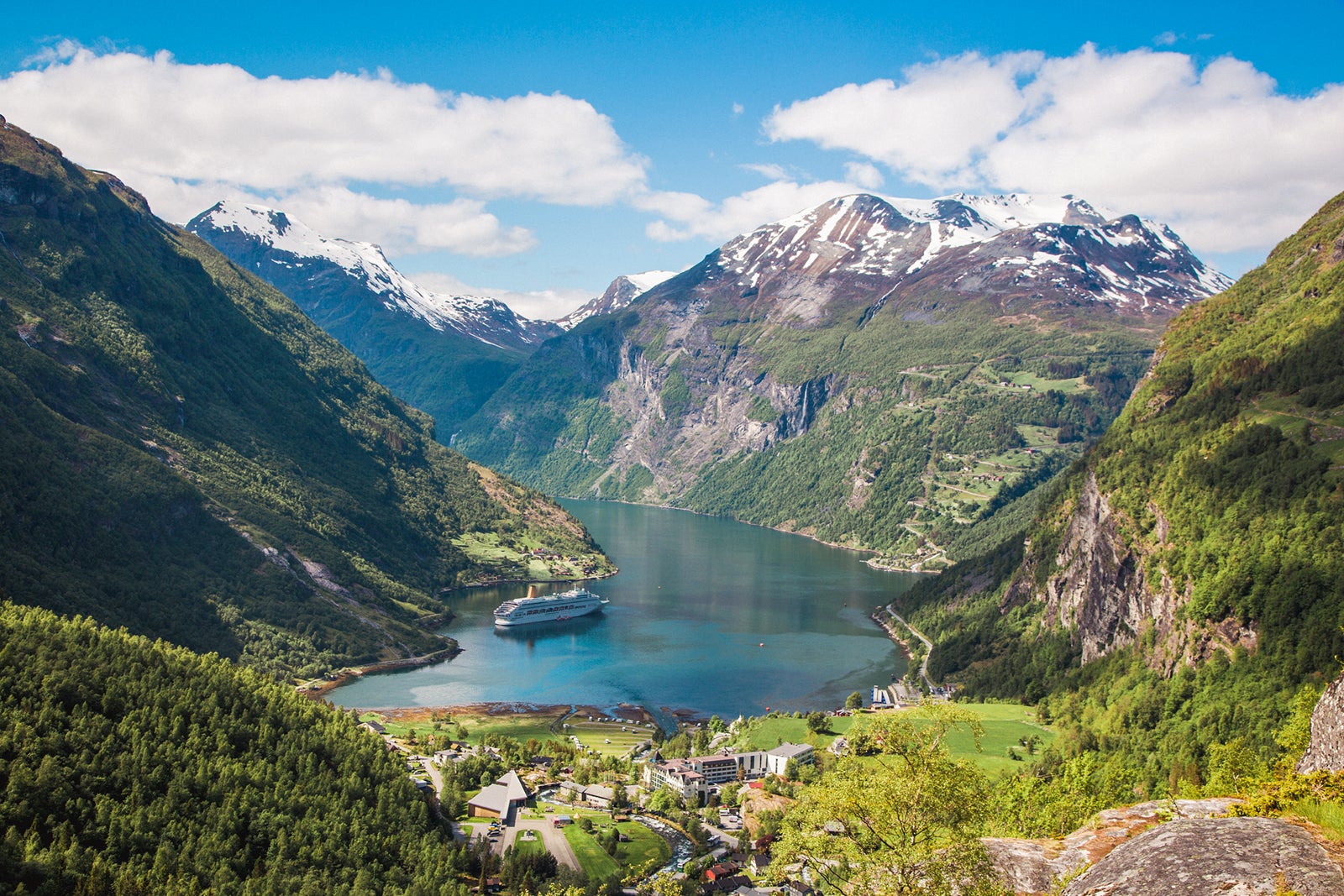
Bora Bora and Moorea, French Polynesia
If you're dreaming of magical sun-filled days in a tropical island paradise in the far corner of the world, consider an island-hopping adventure in the South Pacific. While all the islands of French Polynesia boast glistening turquoise waters, pristine white sand beaches, lush green vegetation and vibrant flora, Moorea and Bora Bora top the list for their striking looks when seen from offshore.
The scenery is magical, with mountain peaks rising from the sea, palm trees swaying in the breeze and overwater bungalows situated along the coast atop crystal clear aquamarine lagoons. Below the water's surface, the views are equally as mesmerizing, with abundant marine life such as hawksbill turtles, colorful tropical fish, several species of dolphins, manta rays, blacktip reef and hammerhead sharks and humpback whales. To explore this fascinating underwater world, plan to go snorkeling or diving around the islands, especially close to the intricate coral reefs, which are teeming with fish and other sea life.
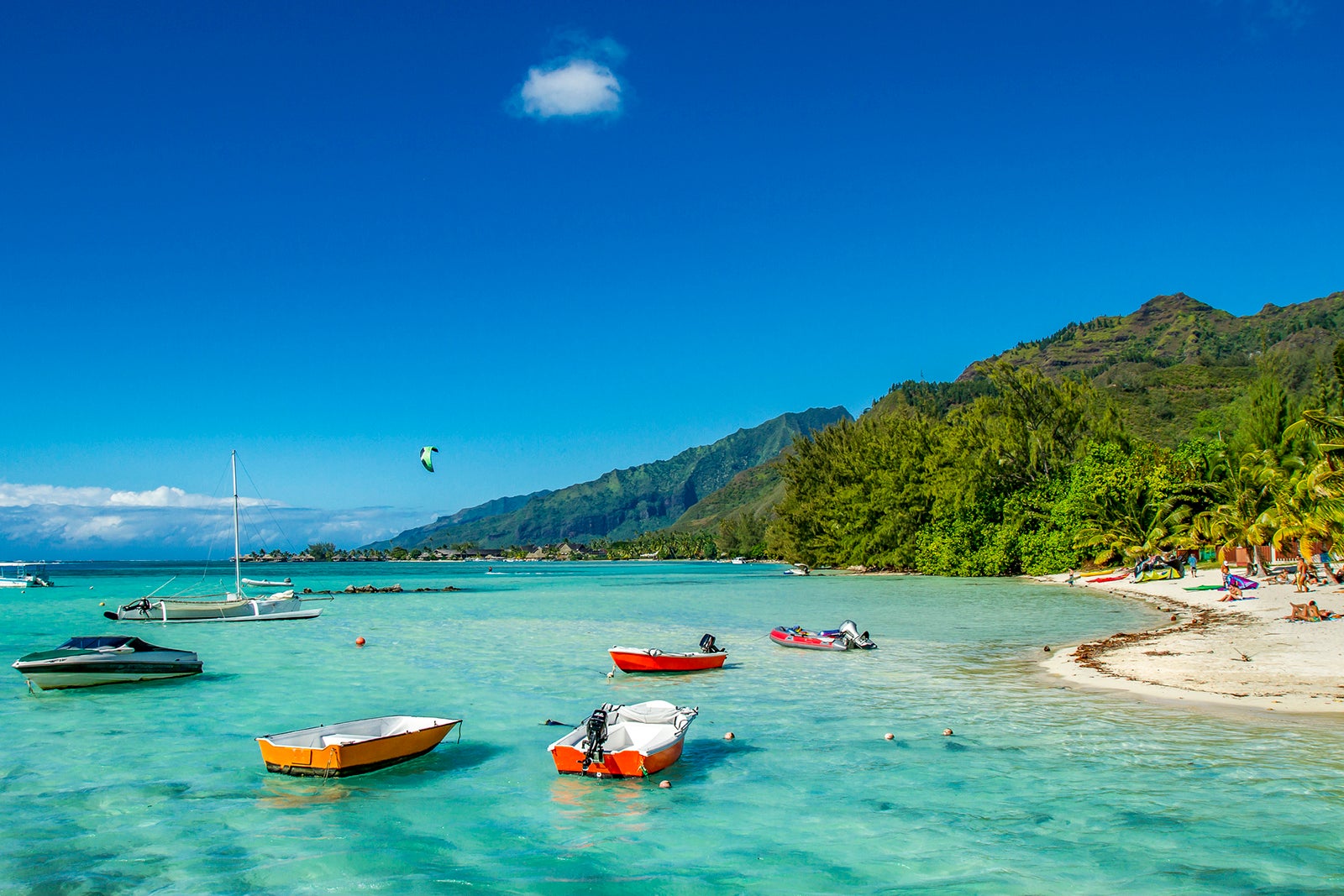
The Emerald City is one of the top places in the world to see from the sea, especially when arriving in Sydney Harbour at night. This bustling metropolis with its sunlit skyscrapers by day is known for its spectacular harbor views after dark due to the illumination of the world-renowned Sydney Opera House and Sydney Harbour Bridge. These iconic images of one of Australia 's largest cities in the Land Down Under are some of the most memorable views you'll ever have from the water.
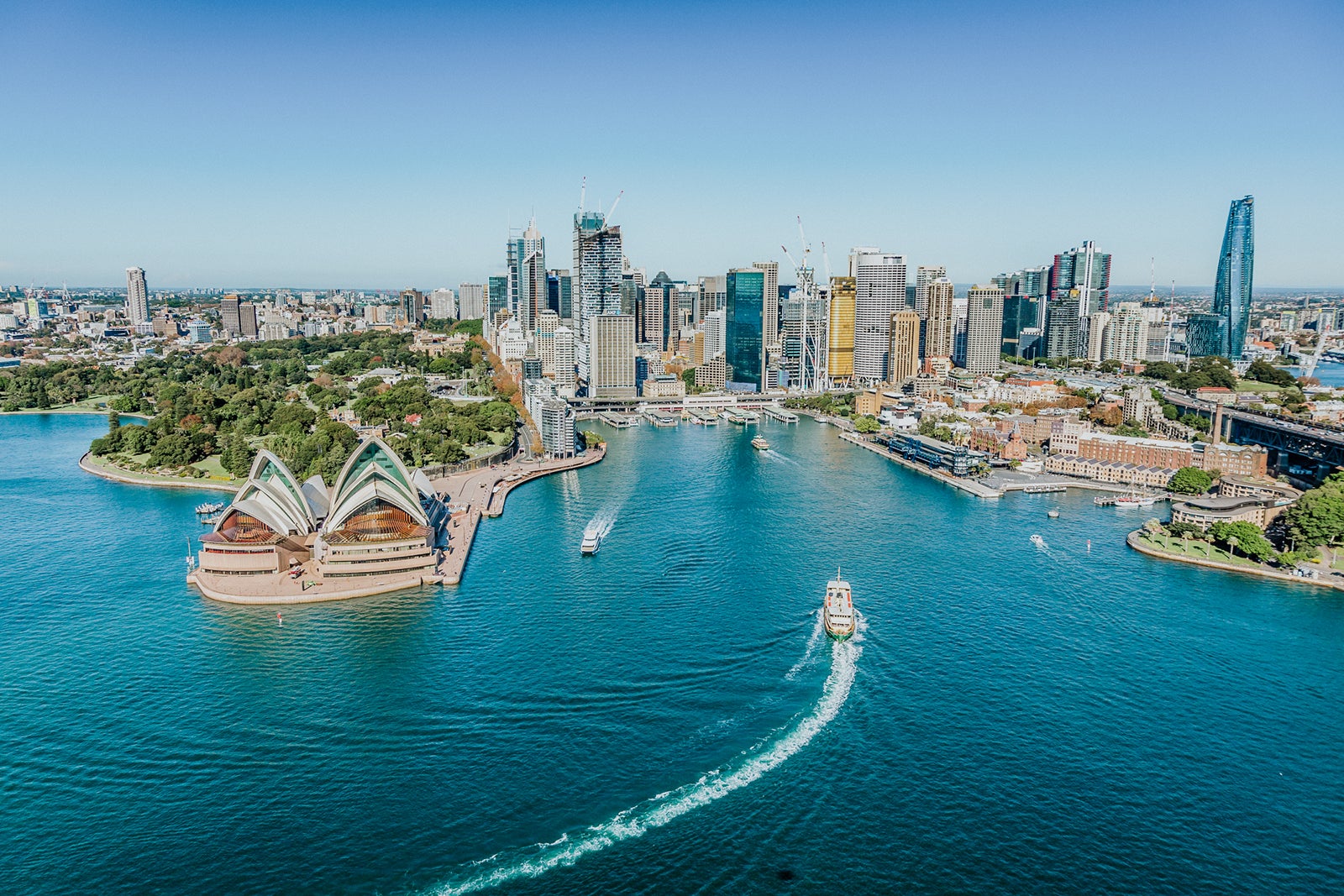
The journey to the bottom of the Earth is a trip of a lifetime for most travelers. Known as the Last Continent, Antarctica's otherworldly icy formations and rugged snow-covered landscape are best viewed via state-of-the-art expedition vessels that can navigate their way around by crunching through icy impasses.
Norwegian explorer Roald Amundsen, the first person to reach the South Pole in 1911, described it this way, "Glittering white, shining blue, raven black … the land looks like a fairytale. Pinnacle after pinnacle, peak after peak -- crevassed, wild as any land on our globe, it lies, unseen and untrodden. It is a wonderful feeling to travel along it."
After a long journey to explore this unique wilderness ecosystem, adventurous travelers will be rewarded with unforgettable vistas of majestic mountains and icebergs, breaching whales and colonies of several species of penguins. While the scenery is breathtaking from the ship, part of the thrill of traveling to Antarctica is to see the ice floes and waterfalls up-close from a kayak or Zodiac. While you're out on the water, it's easy to be overcome with the vastness, ethereal beauty and extraordinary silence of this faraway place.
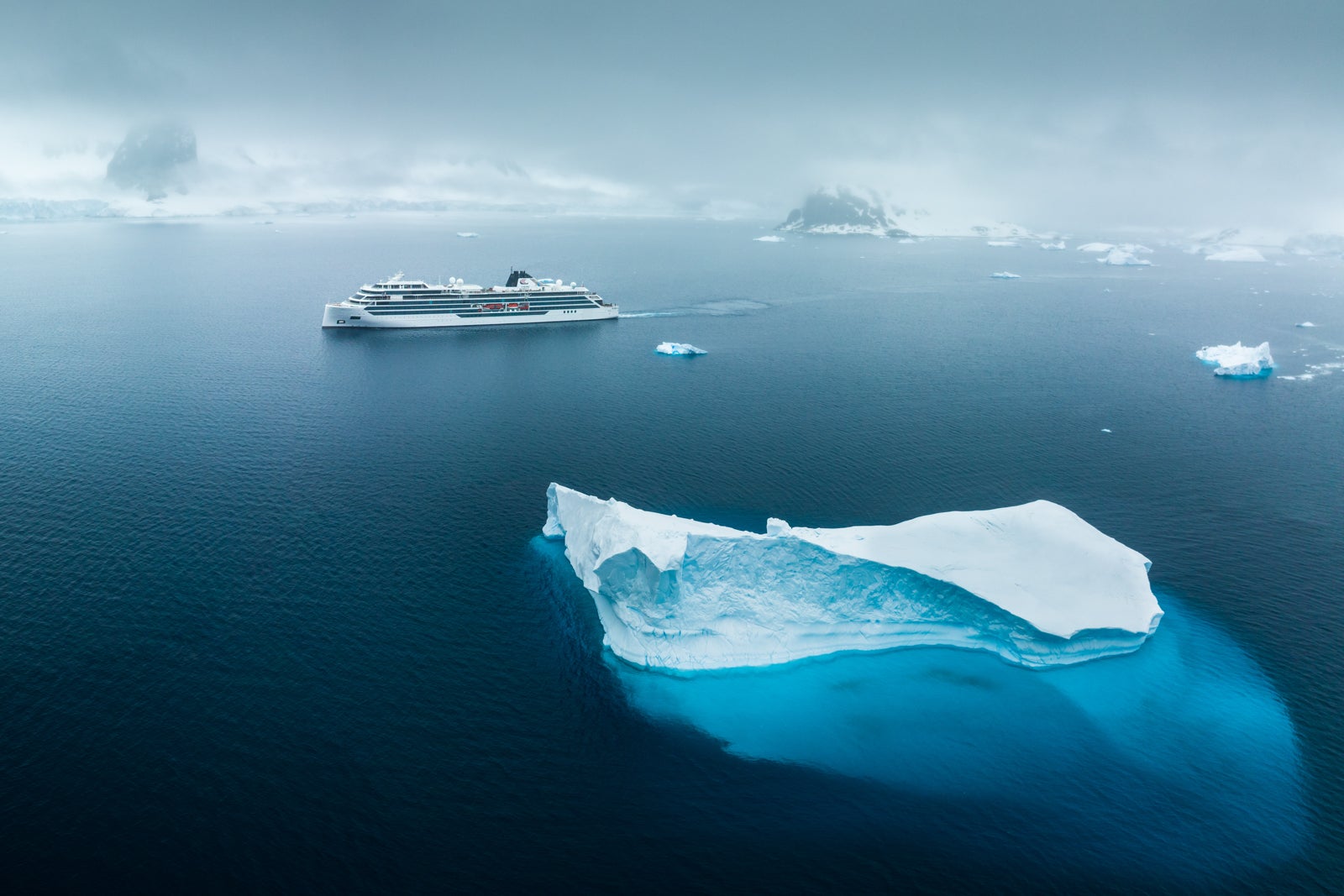
Planning a cruise? Start with these stories:
- The 5 most desirable cabin locations on any cruise ship
- A beginners guide to picking a cruise line
- The 8 worst cabin locations on any cruise ship
- A quick guide to the most popular cruise lines
- 21 tips and tricks that will make your cruise go smoothly
- 15 ways cruisers waste money
- 12 best cruises for people who never want to grow up
- The ultimate guide to what to pack for a cruise
Copyright © 2005 Dana Weniger & Andy Leach [email protected] Site Map

23 Types of Water Transport To Keep You Afloat
Disclaimer: Some posts on Tourism Teacher may contain affiliate links. If you appreciate this content, you can show your support by making a purchase through these links or by buying me a coffee . Thank you for your support!
There are many different types of water transport that form part of the wider transport industry. In this article I will teach you what these different types of water transport are and how they work. Ready to learn more? Read on…
What is water transport?
Runabout boat, pontoon boat, rigid inflatable boat, ship’s tender, cruise ship, personal watercraft, types of water transport- further reading.
Water transport is any form of transportational vehicle which is primarily used to travel by water. There are many different types of water transport, used for both cargo and passengers, which travel on many different waterways. You can find out more about all of the different types below…
One of the main types of water transport is a boat. This is the most likely form of vehicle you would use to travel on water, regardless of whether you’re on a canal or in the middle of the ocean . However, there are of course a lot of different types of boats. We can generally split boats into three categories:
- Unpowered or human-powered boats
- Sailboats
- Motorboats
Each category has many boats within it, all serving different purposes.

These boats, as the name suggests, have a deck area. They are generally small, but have seating areas for groups of people – their main purpose is for leisure and sightseeing, or as a vessel from which to enter the water for swimming or other watersports. With a V-shaped hull, these boats are usually 25-35 feet in length.

A catamaran is a type of boat which has two hulls. They are generally small-ish boats used for fishing or cruising, but this style of boat has been known to be used for car ferries too given their stability.

As the name suggests, these are boats on which people live. They are not motorised because they are usually moored in one place, floating. Often they are built to look more like a house than a boat, but some definitely retain their boat style. You tend to find them on canals or larger lakes, and many people live in houseboats year round. They are also rented out to tourists looking for something a bit different!

These small open boats are an entry-level kind of vessel, used for casual boating and sporting activities. They have a steering wheel and small control panel.

A lifeboat is a small rigid or inflatable boat, generally attached to a larger boat or ship, used for sea rescue when necessary. Ships legally have to have a certain number of lifeboats corresponding with the number of people on board.

This type of boat is used mostly on inland waters, and they are incredibly stable due to their wide and flat shape. They rely on tubes known as pontoons to float on the water. With sensible seating, they are used for sightseeing and fishing.

A barge is a type of water transport used on canals – it is also often called a canal boat. They are long and flat-bottomed, and used either for carrying cargo or as recreational passenger boats. The insides can fit beds, kitchens, seating areas and more.

An airboat is a small, flat-bottomed vessel which is powered by an aircraft-style propeller. They are used for tourist and fishing purposes in marshy and shallow waters – particularly the Everglades in Florida .

These are mostly used for tourist purposes now, particularly on the Nile. They are Eastern Mediterranean wooden sailing boats, seating around 10 passengers with 2-3 crew members.

A hovercraft is one of a few types of water transport which can also travel over land, through mud and on ice. They use special blowers in order to produce a large volume of air under the hull which is slightly above atmospheric pressure – this lifts the vessel allowing it to move. They have many uses.

This is a small narrow boat propelled by the use of double-ended paddles. They are most commonly used for recreational purposes on small bodies of water.

A liner is a very large boat designed to transport cargo or passengers long-distance from point A to point B, usually without stopping unless there is a need to refuel. They are generally not used these days, with flying being the optimal choice. The RMS Queen Mary 2 is the only ocean liner still in regular use, often completing trans-Atlantic journeys.

There is no standard definition of a yacht but they are generally 33ft+ in length with overnight facilities, used for pleasure and usually the height of luxury. You tend to find yachts moored at places like Puerto Banus in Marbella, or Cannes in France . People often make an activity out of celebrity-yacht-spotting!

A ferry is a type of boat generally used to carry passengers short-distance from A-B. They are used within waterside cities as public transport, such as the ferries in Venice or the ‘ferry across the Mersey’ in Liverpool. There are also ferries which travel a longer distance, from the UK to France for example, which also hold cars; these tend to have many more amenities on board such as cabins for sleeping, restaurants and bars, small cinemas and more.

This type of boat is small and flat-bottomed with a square-cut bow; it is propelled by the use of a pole which is pushed against the riverbed. The person doing this is called a ‘punter’, and they will be stood on the boat at the back. Punts are used for recreational purposes mostly.

Also known as a RIB, these tiny boats are – as the name suggests – rigid and inflatable. They are lightweight, high-capacity and unsinkable. RIBs are usually used as work boats; however, they are also used by scuba divers to reach dive sites which are in areas where larger boats can’t get to for whatever reason. They travel fast.

This is one of the most useful types of water transport because a ship’s tender is used to transport people or goods from a large ship to a dock, where there is not enough space to dock the ship itself.

A water taxi is used like land public transport to get people from one point to various other points. They will make multiple stops. Water taxis are used for commuting and also by tourists; you’ll find them in cities like Venice, Liverpool, Istanbul, Brussels, New Orleans and Budapest.
Other types of water transport
There are other types of water transport which are not technically boats, or are not referred to as such. This might be because they’re too big for that category, or too small, or simply operate in an entirely different manner.

A ship is a large water vessel, reserved for travelling the oceans. Ships generally have to be 95ft+ long; they can typically stay at sea for much longer than boats and, as the saying goes, a ship could carry a boat but a boat could not carry a ship. All of that being said, there is no set legal definition of a ship versus a boat.
There are many types of ships, including but not limited to:
- High-speed craft
- Off-shore oil vessels
- Motorised fishing trawlers
- Factory ships
- Cable layers
- Cry cargo ships
- Liquid cargo ships
- Passenger carrying vessels
- Special purpose vessels
- Aircraft carriers
- Minesweepers
- Deep sea survey vessels

One of the most well-known and exciting types of water transport is the cruise ship; they are, obviously, classed as ships – they are passenger carrying vessels, designed for staying at sea for an extended period of time. They differ from liners in that they stop at multiple ports as part of a round-trip. On board you’ll find a range of amenities including cabins, restaurants, shops, theatres, cinemas, bars, nightclubs, tattoo shops, water slides, go-karting tracks and much more. Not ever cruise ship has all of these, but this is just an example of how incredible cruise ships can be.
You can read more about cruising in my article, The 8 Major Types of Cruise.

A surfboard is a tricky one to categorise as one of the types of water transport, but it is listed on many websites as being a form of transport despite not generally being used to go from point A to point B in any way. A surfboard is a narrow plank used to allow surfers to ride a wave for fun.

A PWC is also known as a Jet Ski, which is actually a brand name (owned by Kawasaki) which has become synonymous with this kind of vessel. These differ from boats in that you stand or sit ON them, not in them. They are used for recreation mostly. However, law enforcement also use them due to their speed – and PWC fishing is a fast-growing industry.

And the last of the types of water transport is the submarine. These vessels are used for underwater exploration. There are small two-person submarines which can be submerged for a couple of hours, and there are massive submarines which remain under the water for up to 6 months. These vessels can go much deeper than human divers, allowing for discovery and anti-surface warfare.
If you enjoyed this article on the different types of transport then I am sure that you will love these too!
- Cruise tourism explained: What, why and where
- 15 Types of Rail Transport To Take You Away
- 20 Popular Types of Hotels Around The World
- The 3 Major Types Of Airlines + How They Work
- 50 types of transport from around the world
Liked this article? Click to share!

We specialize in unique, exclusive, personalized travel planning to Croatia and its surrounding countries. We design individualized journeys, small group tours, deluxe cruises and exceptional excursions, suited to each client based on years of personal experience, ongoing research, relationships, and professional expertise.
Latest posts.

A Luxury Croatia Itinerary

Guide to Booking a Customized Tour of Croatia
Find your destination.

Croatia By Land and Sea – Best Combo!
- INFORMATION
- What's Included
- Dates and Pricing
Combining a private land tour with a cabin charter cruise maximizes your travel time! Best of both worlds.
Visiting: ZAGREB – LJUBLJANA – LIPICA – ROVINJ – ISTRIA – ZADAR – KRKA NATIONAL PARK – SPLIT – KORCULA – MLJET & DUBROVNIK – DUBROVNIK – PELJEŠAC PENINSULA – HVAR – BOL/ MILNA (CAPTAIN’S DINNER) – SPLIT
Curious what our other clients have said about Adventures Croatia? Read some of their reviews.
DAY 1: ARRIVE, ZAGREB
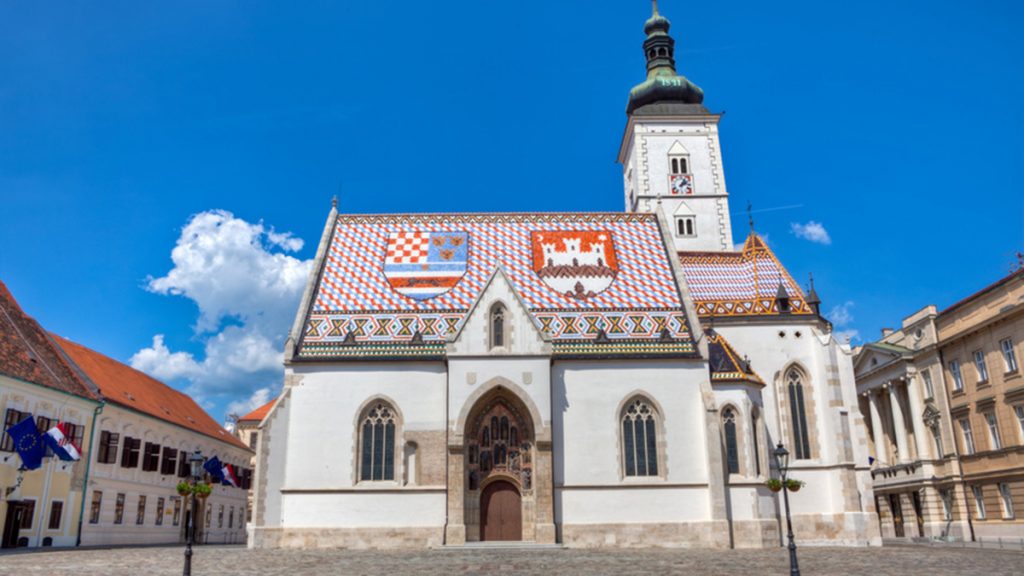
DAY 2: ZAGREB – LJUBLJANA
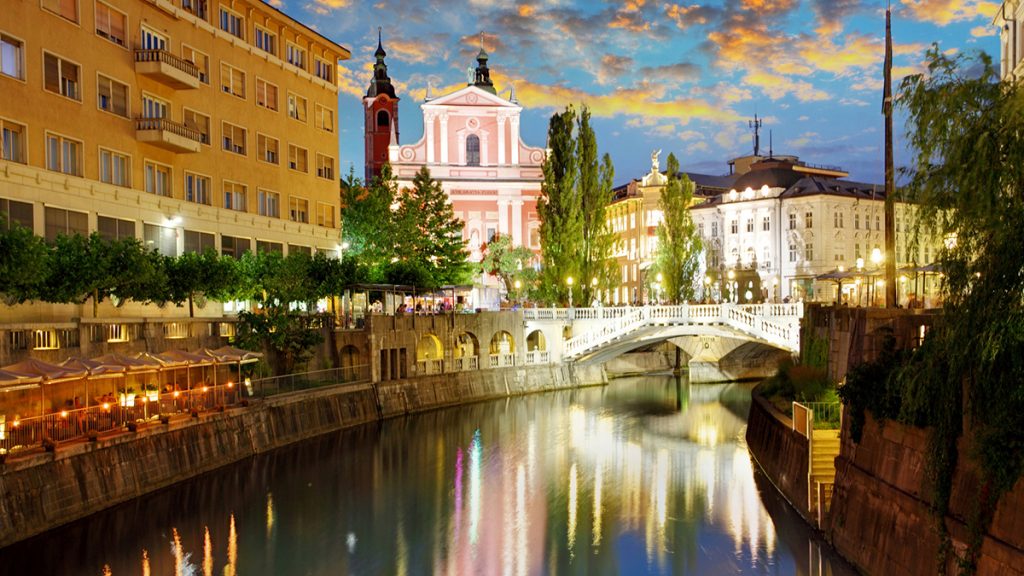
DAY 3: LJUBLJANA – BLED LAKE – LJUBLJANA
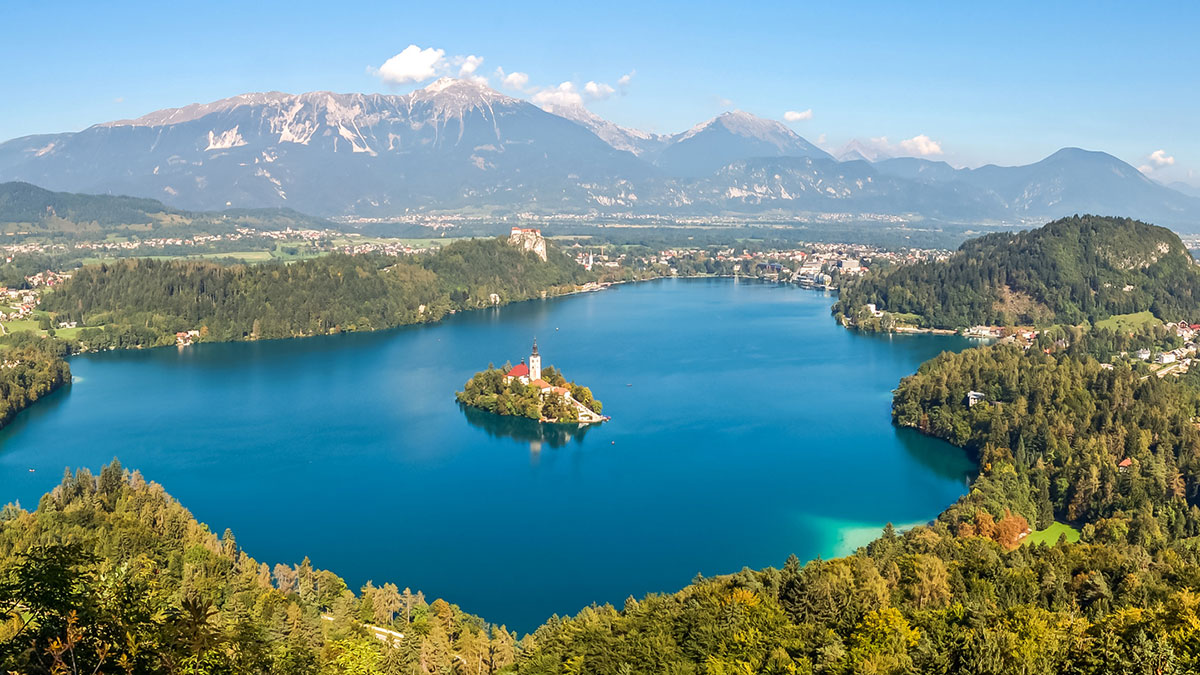
DAY 4: LJUBLJANA – LIPICA – ROVINJ

DAY 5: ROVINJ – ISTRIA – ROVINJ
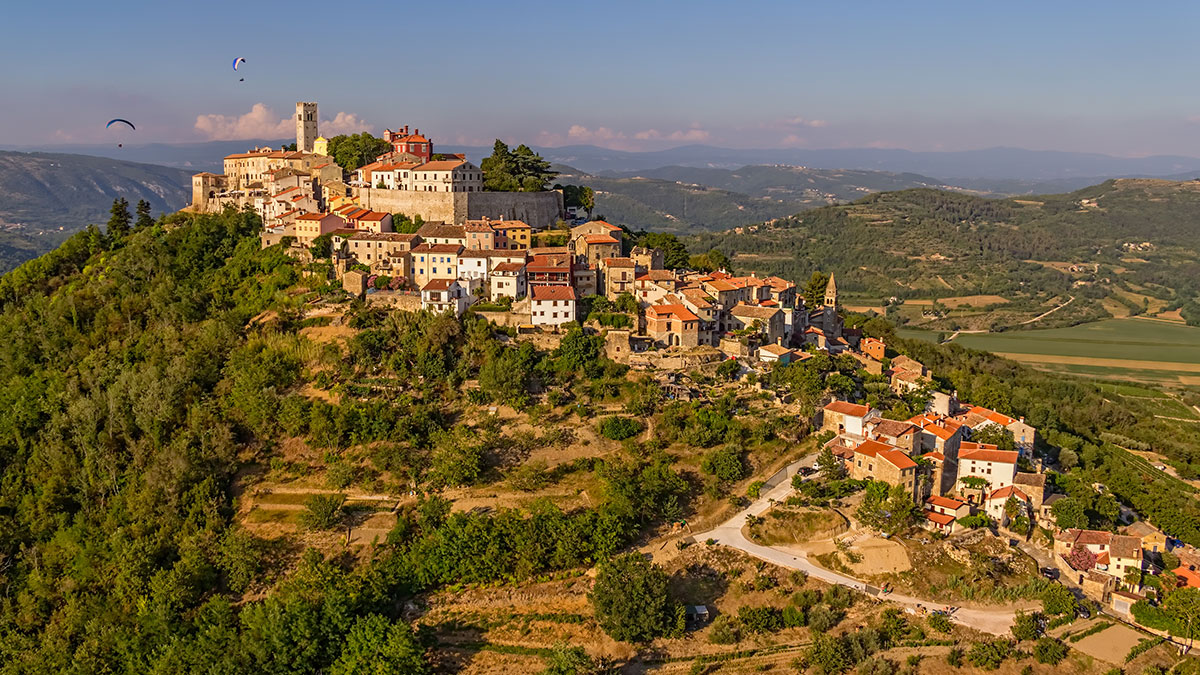
DAY 6: ROVINJ – PULA – ZADAR
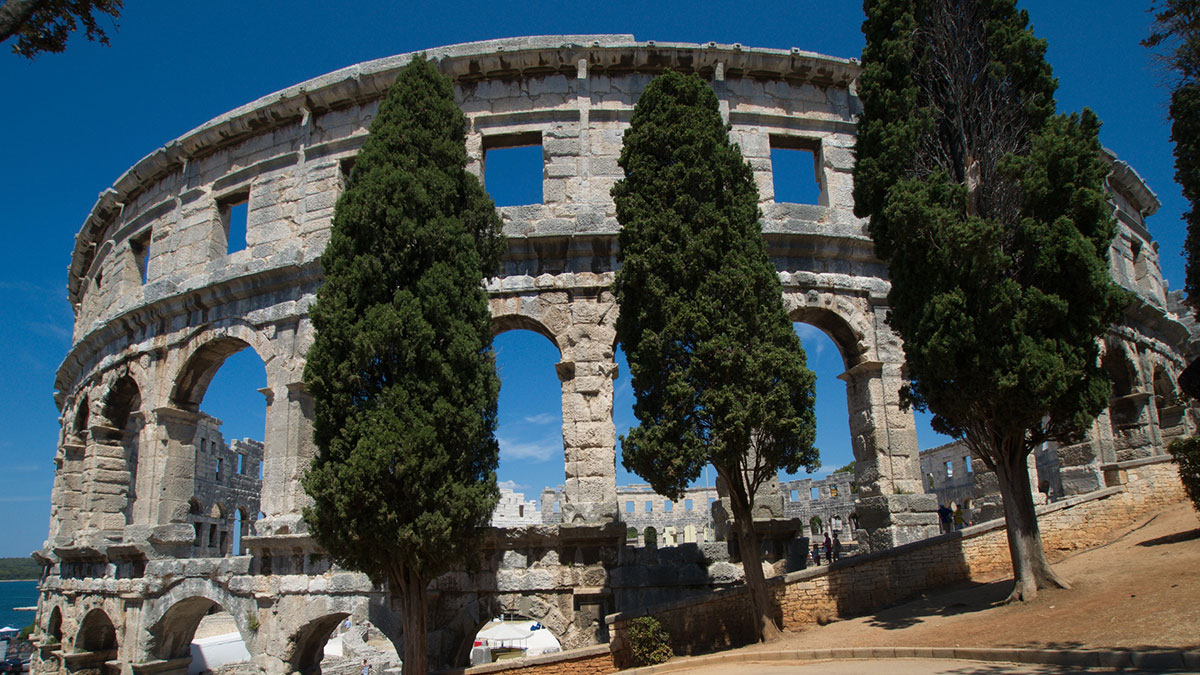
DAY 7: ZADAR – KRKA NATIONAL PARK – SPLIT
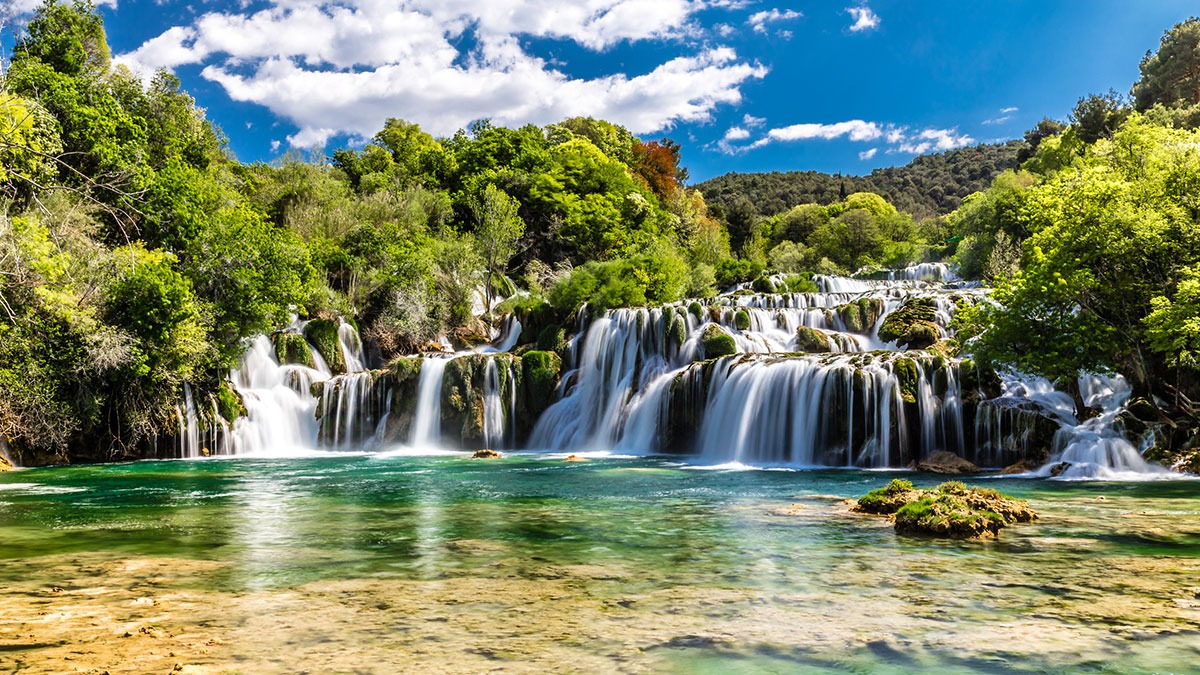
DAY 8: SPLIT (D)

DAY 9: SPLIT - KORCULA (B, L)

DAY 10: KORČULA - MLJET/DUBROVNIK (B, L, D)
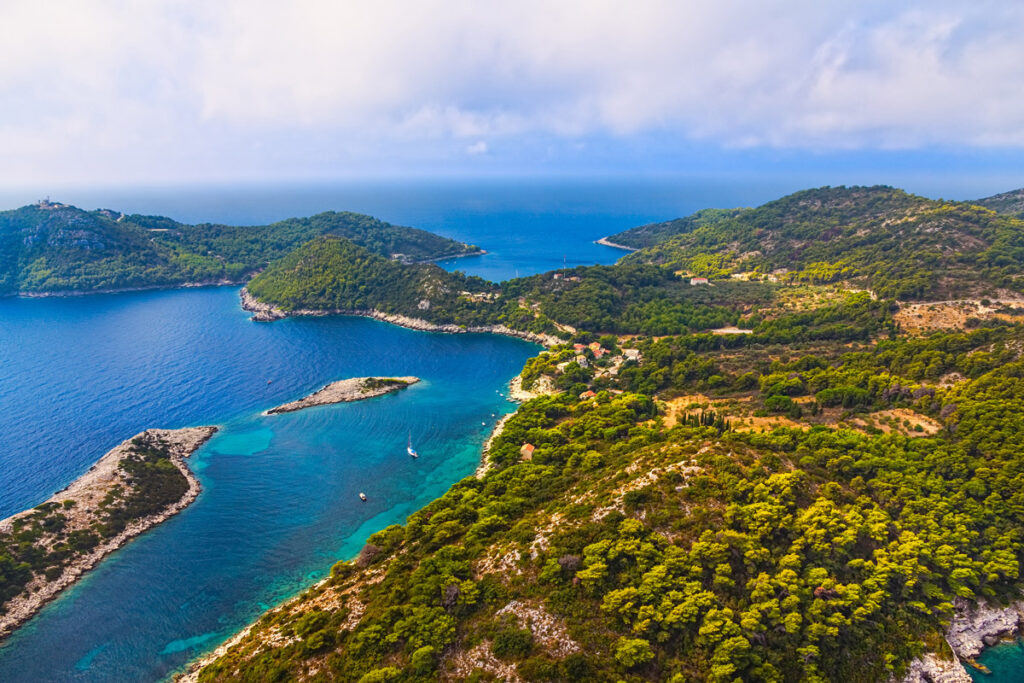
DAY 11: DUBROVNIK (B)
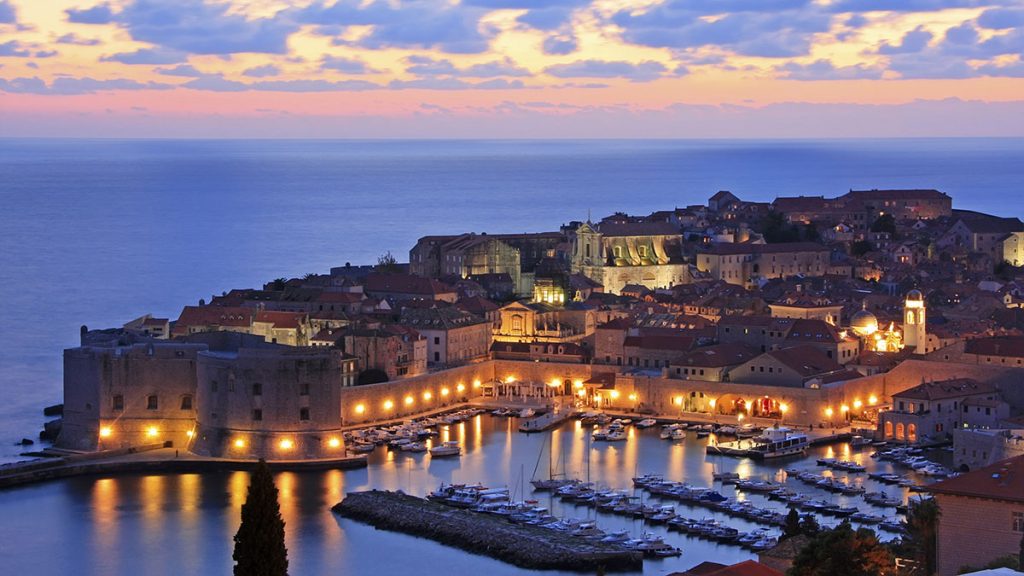
DAY 12: DUBROVNIK - PELJEŠAC PENINSULA (B,L,D)
Day 13: pelješac peninsula - hvar (b,l).

DAY 14: HVAR - BOL / MILNA (B,L,D)
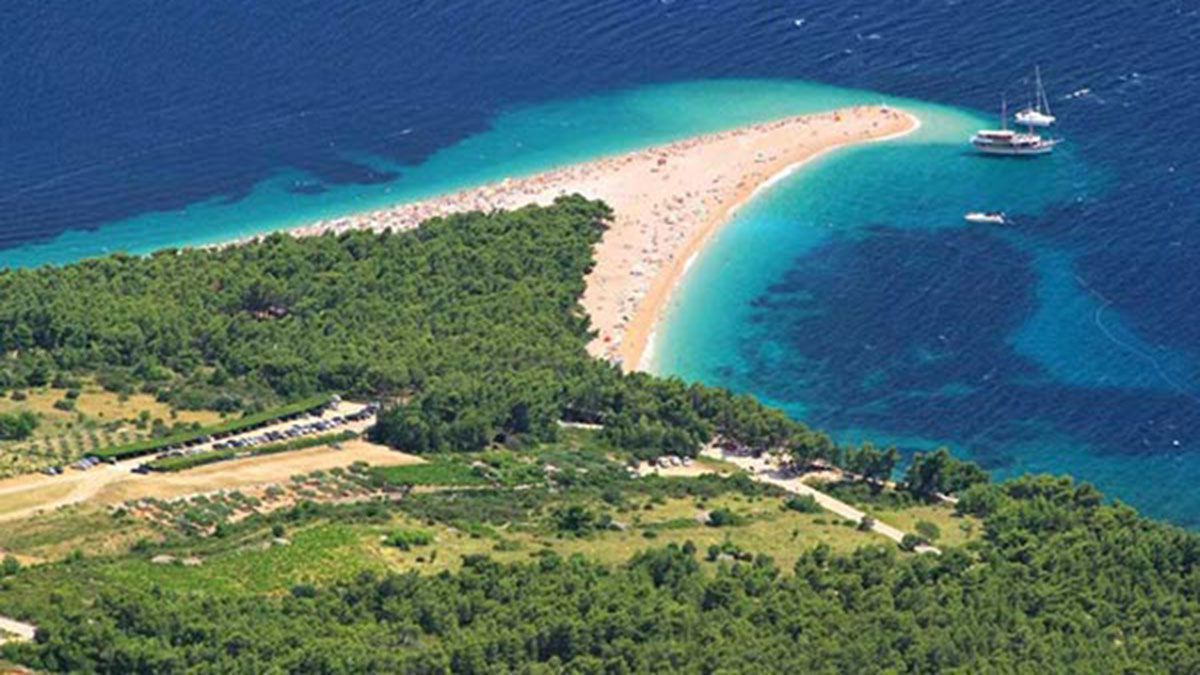
DAY 15: BOL - SPLIT (B)

- Private transfer from Zagreb Airport to Zagreb center
- English speaking guide for a private walking city tour of Zagreb
- 1 night in Hotel 4* (single room, BB basis)
- Private transfer from Zagreb to Ljubljana accompanied by an English speaking driver in a modern, air-conditioned car
- English speaking guide for a private walking tour of Ljubljana
- 2 nights in Hotel 4*, single room, BB basis
- Private half-day excursion to Bled (English speaking driver/guide and entrance fees, lunch not included)
- Private transfer from Ljubljana to Rovinj with en-route stop in Lipica Stud Farm in Sežana
- Organized visit to Lipica Stud Farm and entrance fees
- English speaking guide for a walking city tour of Old Town Rovinj
- 2 nights in Hotel 4* in Rovinj, single room (BB basis)
- Private excursion to Istria inland accompanied by an English speaking driver
- Private transfer from Rovinj to Zadar with an en-route stop in Pula in a modern, air-conditioned car
- English speaking guide for a walking city tour of Old Town Pula
- English speaking guide for a walking city tour of Old Town Zadar
- 1 night in Hotel 4*, in Zadar, single room, BB basis
- Private transfer from Zadar to Split in a modern, air-conditioned car accompanied by an English speaking driver
- Entrance fees to the NP Krka (visit on your own)
- English speaking guide for a walking city tour of Split
- 2 nights in Hotel 4* in Split, single room, BB basis
- Half board (English breakfast & three-course lunch or dinner)
- 1 drink with lunch & 1,5 l water daily
- Captain's dinner with entertainment
- English speaking Tour manager
- Sightseeing in: Dubrovnik, Hvar, Korčula, Split
- An evening dinner cruise along the old town city walls of Dubrovnik
- One way bus transfer from Dubrovnik port to Old town Dubrovnik
- Dubrovnik cable car
- Mljet National Park entrance fee
- Croatian wine & appetizer tasting in Korčula
- Croatian Village party
- Visitors' tax & port fees
- Return transfers from Split airport to Split harbor
- Daily cabin service
- Free wi-fi on board
- Private transfer and assistance with the luggage upon embarkation
- Meals and drinks not mentioned above
- Airfare, Travel Insurance
- Additional excursions and/or services not mentioned in the program
- Personal expenses (internet, telephone, mini bar, etc.)
- Tips and porterage services
- Available dates upon request
- Travel between late May - October (depending on Cruise availability)
- Double occupancy, Solo traveler with supplement
- The land tour is customizable! Make this your own, custom experience
- Price and availability are subject to change based on travel dates, availability, hotels, and specific cabin charter available for dates chosen
Privacy Overview

How To Explore Everglades National Park
Explore Florida's "River of Grass" by land and water for a unique adventure in a subtropical wilderness.
Flocks of white ibis roost in tangled mangroves. Marshmallow clouds reflect upon a blue bay. Expansive sawgrass prairies dance in the coastal wind. Welcome to Everglades National Park , the largest subtropical wilderness in the United States and largest wilderness area east of the Mississippi River . The park encompasses 1.5 million acres of diverse ecosystems and endless adventure in South Florida , about 20 percent of the original expanse of this slow-moving river.
Designated as a United Nations Educational, Scientific, and Cultural Organization (UNESCO) World Heritage Site, International Biosphere Reserve, and Wetland of International Importance, this national park attracts visitors from around the world for its unique landscape and ecological importance. In this guide, we’ll help you prepare for your next trip to Florida’s “River of Grass.”
Entry Points and Visitor Centers
There are three entry points to Everglades National Park:
- Everglades City (about 45 minutes from Naples ) in the northwest
- Miami in the northeast
- Homestead (about 45 to 60 minutes from Miami) in the southeast
Due to the wetland terrain of the park, these three entrances are not connected. You won’t be able to enter the park in one region and drive through it to the others. Therefore, it’s best to pick one region per day to explore in depth.
All park visitors are required to pay an entrance fee, which ranges from $15 to $30. You can also use an interagency annual pass to enter. Visitor centers and entrance stations have set operating hours, but the park remains open 24/7.
Everglades City
The Everglades City end of the park hosts the Gulf Coast Visitor Center , though has been operating from temporary structures and hosting tabling events while the park repairs damages sustained from Hurricane Ian . As such, there are currently no set hours for the location.
Unlike the other two entry points, this end of the park has no formal fee collection booth or drive-through entrance. The region is best for those looking to explore the park on the water, offering an easy access boat ramp into Chokoloskee Bay.
The Miami entrance to the park hosts the Shark Valley Visitor Center , which is about a 45-minute drive from the Miami airport. It’s located along the relatively remote, two-lane Tamiami Trail (U.S. Highway 41) between Miami and Naples.
The visitor center operates daily from 9:00 a.m. to 6:00 p.m., with the parking gate and lot opening at 8:30 a.m. This region of the park is best for visitors wanting to explore on foot or bicycle.
The Homestead entrance to the park hosts both the Ernest F. Coe Visitor Center and the Guy Bradley Visitor Center . This region of the park offers opportunities for exploring both on the water and by foot.
The Ernest F. Coe Visitor Center is located just after the park entrance. It includes a bookstore, educational displays, and park information . It operates from 9:00 a.m. to 5:00 p.m., April through mid-December, and 8:00 a.m. to 5:00 p.m., mid-December through March.
When to Visit
There are two seasons in Everglades National Park: wet and dry. Dry season typically occurs from December through April (winter/spring), while wet season stretches from May to November (summer/fall). While you can visit the park during either season , each has pros and cons.
Dry season sees little rainfall, relatively low humidity, and fewer biting insects like no-see-ums and mosquitoes. It offers a warm winter escape and is when the park sees its largest variety of birds. As areas of the park dry out during these months, hiking trails that might be flooded during the wet season can also be easier to navigate. However, since this is such a pleasant time to visit, you can expect to see more travelers and popular areas may experience crowding.
Wet season brings a lot of rain and thunderstorms, and its conditions create an influx of mosquitoes and other biting insects. There are also limited options for ranger-led programs during these months, though local guiding services continue to operate. While visiting the park in the rainy season has several downsides, it also provides fewer crowds and beautiful scenery as storms move across the landscape.
Where to Stay
There are plenty of places to stay close to Everglades National Park. Options range from primitive campsites to full-service hotels , depending on how close you’d like to be to the park and what amenities you prefer.
There are two frontcountry campgrounds in the southern end of the park for car camping, tent camping, or RV camping:
- Long Pine Key Campground: This one is close to the Ernest F. Coe Visitor Center and Long Pine Key Trail. It’s open November 1 through April 30. Fees range from $33 to $60 per night. Amenities include bathhouses, a dump station, potable water, and cell phone service for AT&T and Verizon.
- Flamingo Campground: This one is close to the Guy Bradley Visitor Center and Florida Bay. It’s open year-round, though portions close during the wet season. Fees range from $33 to $60 per night. Amenities include bathhouses, dump stations, picnic tables, grills, and an amphitheater for winter programs.
Park concessionaire Flamingo Adventures operates both campgrounds. You can learn more and reserve a campsite on their website . Flamingo Adventures also offers houseboats and eco-tents near the Flamingo Marina for a glamping experience in the park.
Other RV and car camping options can be found along the Tamiami Trail, such as Midway Campground , Monument Lake Campground , and Burns Lake Campground , all managed by Big Cypress National Preserve.
Kayakers and other boaters can also find primitive camping in the Everglades backcountry at one of its more than 40 ground, beach, and chickee wilderness sites. Backcountry campers must obtain a wilderness permit, which comes with a $21 fee plus $2 per person per night. Check the park’s website for critical information about planning a backcountry trip.
The Flamingo Lodge is set to re-open in the park beginning November 2023. It was rebuilt after being destroyed by hurricanes Katrina and Wilma in 2005. Located at the southernmost tip of the Florida peninsula in the Homestead side of the park, the eco-conscious space offers private balconies with views of Florida Bay, Wi-Fi, kitchenettes, guided activities, a restaurant and bar, and more. Rates range from $159 to $399 per night. You can make a reservation on the Flamingo Adventures website .
There are also more traditional lodging options offered in the towns surrounding the park. Hoosville Hostel is a unique spot that’s convenient to the park’s Homestead entrance. Ivey House offers a perfect stay for exploring the Everglades City side of the park. Well-known hotel chains can be found in Naples, Miami, Homestead, and other nearby cities.
Where to Eat
Once in the park, your dining options are limited, so it’s best to pack a picnic for your day of exploring. However, you can find some snacks and beverages at the visitor centers and Flamingo Marina.
Homestead has a variety of restaurants available, such as Yardie Spice Jamaican & Haitian and White Lion Cafe . The Robert Is Here fruit stand is also worth a stop for its variety of tropical fruits, milkshakes, and local produce. It typically has a food truck in its picnic-area-meets-zoo behind the establishment.
Everglades City is also ripe with local dining options. Grab a tasty Cuban breakfast at HavAnnA Cafe and plan for fresh grouper tacos for dinner at Camellia Street Grill . Nely’s Corner and City Seafood are two other popular stops for breakfast or lunch, with the latter offering fresh stone crab straight from their boats.
Explore by Water
Much of Everglades National Park is water, including vast bays, slow-moving channels through mangroves, and thick vegetation with swampy undersides. Getting on the water in the park is a great way to experience its landscape.
The Everglades City end of the park offers access to Chokoloskee Bay, the Ten Thousand Islands, and the Gulf of Mexico . The Sandfly Loop Paddling Trail is a popular one for kayaks and canoes in that area, as are the Halfway Creek and Turner River Canoe Trails .
The Homestead side of the park offers access to Florida Bay, the Buttonwood Canal, and Whitewater Bay. It has several popular paddling routes, such as Nine Mile Pond, Hell’s Bay, and Mud Lake Loop. You can learn more about each on the park’s website .
If it’s your first time in the park, know that navigation and conditions are tricky in the Everglades, even for experienced paddlers. There are several outfitters near both park entrances that offer guided tours, fishing trips , and kayak rentals, along with a wealth of knowledge worth soaking up for a safe adventure.
If you’re staying at Ivey House or Hoosville Hostel, both offer these services. You can also check out Everglades Florida Adventures in Everglades City and Flamingo Adventures on the Homestead side. In addition, Naples Fishing Adventures provides one-way water shuttles for you and your gear if you want to get deeper into the Everglades backcountry and paddle back to the Gulf Coast Visitor Center.
Explore by Land
If you’d like to stay on solid ground, Everglades National Park has options for hiking, biking , and tram tours to suit your needs. You can access these options from the Shark Valley Visitor Center and the Homestead entrance.
From the Shark Valley Visitor Center, you have access to a 15-mile paved trail to explore by bike, foot, or tram. The trail is excellent for wildlife viewing. You’ll also find panoramic views of sawgrass across the Shark River Slough from the trail’s accessible, 65-foot observation tower. There are bike rentals onsite for $23. The tram tour lasts about two hours and rates range from $15 to $29. You can reserve both in advance from Shark Valley Tram Tours, Inc .
The Homestead end of the park has some of the best boardwalks and hiking trails. The Gumbo Limbo Trail is a 0.4-mile paved loop through a shaded, jungle-like habitat of gumbo limbo trees, royal palms, and air plants. Right next door is the popular Anhinga Trail . This 0.8-mile hike follows a boardwalk through a sawgrass marsh. Expect to see a lot of wildlife, such as alligators, turtles, anhingas, herons, egrets, and many other birds.
You can find additional hiking trail options on the park’s website . From early December to late March, you can also explore the park’s HM69 Nike Missile Base , a preserved Cold War relic.
For More Information
To help with your trip planning, you can download the National Park Service mobile app , which includes interactive maps, tours of park places , on-the-ground accessibility information, and more park knowledge.
Also make sure to check the Everglades National Park website for the latest hours, services, and conditions in the park.
For more Southern Living news, make sure to sign up for our newsletter!
Read the original article on Southern Living .

- Membership & Benefits
- Discounts and special offers
- Competitions
- Become a member
- Have your say
- About your membership
- Change my details
- Pay or renew
- Member News blog
- Online shop
- Log into myRAC
- myRAC Frequently Asked Questions
- 5%* off purchases in-store and online
- Savings on gas for your home
- Save 4 cents per litre off fuel
- Car & Motoring
- Roadside Assistance
- Car insurance
- Caravan loans
- Motoring for businesses
- Motorcycle insurance
- Caravan & trailer insurance
- Car servicing & repairs
- Car Buying Service
- Electric vehicle products and services
- Electric SUVs available in Australia 2023
- WA's cheapest cars to own and run
- Some of the best cars for towing
- Home & Life
- Home insurance
- Boat insurance
- Life insurance
- Health insurance
- Home security
- Investments
- Personal loans
- Pet insurance
- Small business insurance
- Home services
- Pre-purchase building inspection benefits
- Learn to save a life in 30 minutes
- How secure is your home?
- Travel & Touring
- Our holiday parks & resorts
- Find a travel centre
- Travel & cruise deals
Travel insurance
- Car hire & driving holidays
- WA holidays
- International driver’s permits
Cruise packages
- WA’s best road trips and long distance drives
- Endless things to see and do in Perth and WA
- WA’s top destinations and places worth visiting
The Kimberley by land and water
Travel & Touring | WA Things To Do
By: Mark Daffey
The Kimberley is one of Australia’s last frontiers – a stunning wilderness filled with ancient landscapes. And there are two ways to see it that are both very different.
Adventurous travellers will find the Kimberley region hard to resist.
Its gorges snake towards the ocean fed by some of the highest, most voluminous waterfalls in the land. There are brittle mountain ranges worn down by time. Beaches and inlets that become inundated beneath some of the world’s highest tides. Its offshore reefs and lagoons protect turtles and rays and humpback whales swim in its ocean currents.
There is nowhere else like it on the planet. But which is the better way to explore it: by land or water?
RELATED: Broome and the Dampier Peninsula with kids »
View this post on Instagram A post shared by NatureByNathan - Australia (@naturebynathan)
Gushing waterfalls and incredible lightning displays are typical of the Kimberley’s wet season that lasts from November to April. Rivers swell and unsealed roads close, preventing overland travel beyond the Great Northern Highway that connects Broome and Kununurra via Fitzroy Crossing and Halls Creek.
Cyclones may occur during January or February as well, and it’s during these months that even the highway often closes. It also explains why cruises don’t operate until March – peak viewing time for waterfalls.
The south-easterlies start to blow by April, heralding the arrival of the dry season. Temperatures and humidity remain high and the inland regions begin to open up again. Vegetation is still green by June, when the tourist season reaches full swing. Days are predictably clear and dry and evenings cooler until August.
By September, temperatures are once again on the rise, steadily building until the monsoon rains arrive again in November. Cruises will have halted by this time and overland travel has most likely ceased.
Travelling by land
Broome is the largest town in the Kimberley with holidaymakers drawn to its resort accommodation and beaches. But if you confine your visit only to here then you’ll definitely be missing out.
In the east, Kununurra is a leafy oasis set amongst orchards and farmlands that are nourished by the Ord River irrigation scheme. It’s the gateway to Hidden Valley, Lake Argyle, the Bungle Bungle Range, and the Wolf Creek meteorite crater. The Ord Valley Muster in May is the biggest event on the town calendar.
Just two roads connect the east and west Kimberley – the Great Northern Highway and the unsealed Gibb River Road . The latter is considered one of Australia’s great four-wheel drive routes, linking cattle stations that are as big as some European countries.
Arguably the region’s most spectacular natural attraction is the Bungle Bungle Range inside Purnululu National Park, with its massive banded sandstone domes resembling beehives. Easy walking trails here reach Cathedral Gorge and Echidna Chasm, while Piccaninny Gorge’s inner sanctum requires an overnight trek.
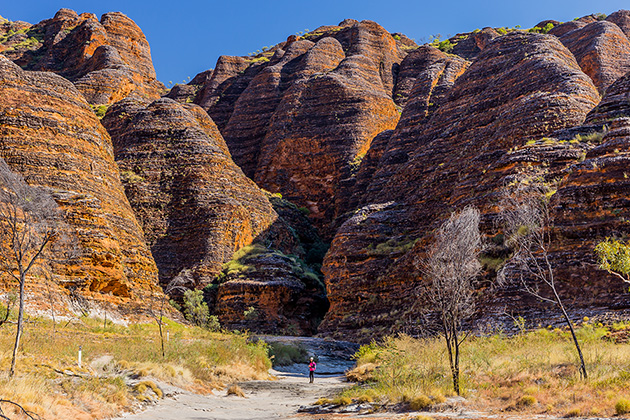
Windjana Gorge and Tunnel Creek, in the Napier Ranges at the western end of the Gibb River Road, are popular destinations on day or overnight tours from Broome. The soaring walls of Windjana Gorge shade a series of pools teeming with harmless freshwater crocodiles, while the extensive Tunnel Creek cave system burrows through the ranges for close to a kilometre.
Following the Gibb River Road east, there are countless opportunities to branch away from the track to swimming holes and waterfalls. The rock pools in Emma, Bell, Galvans, Adcock and Manning Gorges are all great places to wash the red Kimberley dust off after a day of driving.
Back on the highway, Grade V and VI rapids on the Fitzroy River attract white-water rafters during the wet season, then tranquil boat tours run through Geikie Gorge once the rains subside and the river calms.
In the far north, the four-tiered Mitchell Falls is the highest waterfall in Western Australia. Many visitors see the falls by helicopter excursions from cruise ships, but the overland journey along the bone-jarring Kalumburu Road is an adventure in itself.
View this post on Instagram A post shared by Charlotte + James Maddock (@cjmaddock)
Travelling by water
With very few exceptions, the Kimberley’s splintered, 2500km-long coastline is accessible only by boat. Massive tides ebb and flow with alarming speed and intensity here, dictating cruise itineraries on a daily basis.
This is especially evident at Horizontal Falls, a tidal pinch that’s said to be like an ocean trying to squeeze through a letterbox. The best way to feel that power is up close, on a motorised Zodiac ride.
Montgomery Reef is a truly fascinating sight, rising from the sea like a waterlogged spaceship as the tides recede. Also offshore are the Lacepede Islands. Both are regular inclusions in cruise itineraries.
King George Falls is Western Australia’s largest waterfall by volume and is most impressive immediately following the wet season, when twin cascades tip over the edge of a sandstone plateau that’s 80m high. King Cascade is a spring-fed fountain that tumbles year-round into an inkblack lagoon 20km inland from the Prince Regent River mouth.
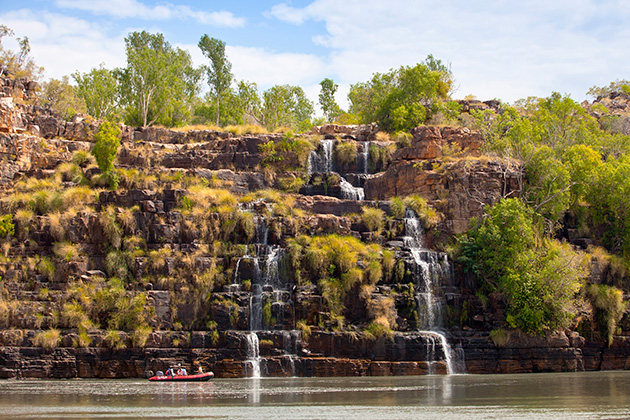
There are idyllic anchorages right along this splintered coast. Headlands and islands rise vertically from the sea in Doubtful Bay and at the mouth of the Hunter River in Prince Frederick Harbour – a notorious haunt for crocodiles and sharks.
Inland stays
If you’re going overland, options range from $10-a-night bush camping to $3000 suites. Station stays are the most common way to overnight outside the towns. Several former cattle stations that are now preserved for wildlife and habitat conservation also offer overnight stays.
Station activities include helicopter flights over the Cockburn Ranges, tag-a-long four-wheel drive tours to remote gorges and waterholes, horseback and bird watching excursions, fishing and canoeing, and hikes along walking trails.
View this post on Instagram A post shared by Diggers Rest Station (@diggersreststation)
At the top end, El Questro offers luxury homestead stays perched on the edge of Chamberlain Gorge, while Home Valley’s shady ‘Grass Castles’ are situated on the banks of the Bindoola Creek.
There’s safari-style ‘glamping’ beside Annie Creek at the Australian Wildlife Conservancy’s Mornington Wilderness Camp, comfortable stockman’s cabins at Ellenbrae, homestead rooms at Mt Elizabeth and Mt Hart, rustic bungalows at Drysdale River, Savannah huts at Birdwood Downs, and bush huts and an air-conditioned bunkhouse at Diggers Rest.
RELATED: 8 unforgettable station stays in WA »
Guests on APT’s Kimberley tours stay in the company’s own wilderness lodges near Mitchell Falls, Bell Gorge and the Bungle Bungle Range. Accommodation is typically in private tented cabins, with open-air, threecourse dinners and buffet breakfasts included. Similarly, comfortable tented accommodation is available at the Marunbabidi Wilderness Lodge.
Cruising the Kimberley
Cruises were suspended during 2020 due to the coronavirus pandemic. Some have already resumed this year, with many booked out months in advance. The cruise season begins in March each year – a month or two earlier than land-based tours, which are still at the mercy of the wet season – and ends in October.
Cruises depart Broome, Cygnet Bay or Wyndham. Vessels range from eightpassenger minnows to ocean liners. As a rule, smaller vessels are more manoeuvrable, though passengers on larger ships can also access tight river gorges and beaches by tender.
Standards range from five-star luxury cruise liners to budget charters where passengers sleep in tents and swags on beaches. Facilities may include spa baths, helicopters, Wi-Fi capability, gourmet meals and extensive wine lists, with prices determined accordingly.
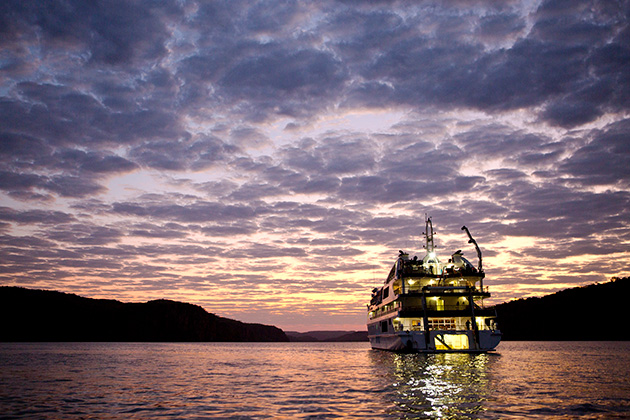
COVID-19 prevention protocols vary from one cruise line to another. Before booking, ask what health and booking cancellation policies are in place. Are refunds or credits offered, for instance? Are bookings transferable? Do cancellation fees apply?
By tour or independently?
Land-based tours are essentially chauffeur-driven services through a remote area. You might have to chip in to pitch tents, prepare meals or load up the truck under the watchful eye of an expedition leader, but the rest of the time is yours to enjoy.
By joining a tour, you won’t be wasting time driving to and from the Kimberley either – just fly into Broome or Kununurra then off you go.
On the flipside, tour itineraries are pre-determined, with little flexibility to stay an extra day or two. The greatest advantage of travelling independently is the freedom it offers. You can take as long as you like and find camping spots away from the masses.
If you do choose independent travel, be well prepared especially along tracks like the Gibb River or Kalumburu Roads.
Away from the towns, you can restock supplies and fuel up at Mt Barnett Roadhouse (the entrance point for Manning Gorge), at the Imintji Store near Bell Gorge, or at El Questro. Be sure to take a detailed paper map – mobile phones don’t always work out here.
Above all, remember to stop, relax and take it all in whenever you can. And count yourself lucky to be able to see one of the world’s last true wilderness regions.
Last updated: May 2021 Tile image credit: Tourism Western Australia
Related articles
5 epic wa road trips you can only take in a four-wheel drive.
Epic WA road trips that are guaranteed to get some West Aussie dirt on your tyres.
Kununurra to Broome via Gibb River Road
A road trip bejewelled with spectacular gorges, waterfalls and vistas not found anywhere else on earth.
Ultimate guide to the North West
The North West region's ancient landscapes are breathtaking, captivating and definitely mysterious.
Related products
Plan your next adventure.
Members save up to 25% on maps and guides
Choose from our range of travel insurance options to find the one that suits you
Campervan Hire
Australia and NZ
Taking a road trip? RAC members save 10% on maui, Apollo, Britz, Cheapa, Mighty and Hippie vehicles. Find out more.
- Advocating change
- In the community
- Help centre
- Frequently asked questions
- Find a branch
RAC Products & Services
- Pay or Renew
- Holiday Parks and Resorts
- Home Security
- Car servicing & repair
- Home Services
Information & advice
832 Wellington Street, West Perth, Western Australia, 6005
This website is created by The Royal Automobile Club of WA (Inc.). © 2024 The Royal Automobile Club of WA (Inc.).
RAC acknowledges and pays respects to the Traditional Custodians throughout Australia. We recognise the continuing connection to land, waters and community.
- Accessibility
- RAC on Instagram
- RAC on Facebook
- RAC on Twitter
- RAC on LinkedIn

- 1-855-932-1711
- My Account Hello Credits My Account Log out
Alaska Cruisetours
An Alaska cruisetour is our award-winning cruise through Alaska's Inside Passage paired with a scenic train ride into Interior Alaska, plus up to 3 nights at McKinley Chalet Resort, our immersive lodge at the gates of Denali National Park. If you choose, continue the journey into the Yukon on your Alaska cruisetour. From the depths of the icy waters to the tops of snow-capped summits and everything in between, combine land and sea for unforgettable moments. Witness a world of wildlife, including whales and eagles, from the open decks of our ships and spot Alaska’s "Big 5" — moose, bears, Dall sheep, caribou, and wolves as you ride our luxury glass-domed McKinley Explorer® deep into the heart of a wilderness unseen by most. Breathe in fresh mountain air and roast s’mores under the stars at your base camp for adventure.
Alaska Cruisetour Planning Made Easy
More about alaska cruisetours.
Experience Alaska With A Land & Sea Cruisetour
Early Booking Bonus on Alaska Cruisetours
On this page - plan your alaska cruise tour:, the premier denali experience.
We offer a fully comprehensive and unforgettable Denali experience based on our 75-year history in the Great Land. Our Alaska cruisetours feature transportation, accommodations and more to make your wildest Denali dreams come true.
McKinly Chalet Resort at Denali
Your basecamp to Denali adventures set among rugged Alaska wilderness. Enjoy creature comforts, exquisite local cuisine and lively Denali Square.
Tundra Wilderness Tour
Travel deep into Denali National Park for sightings of Alaska’s Big Five: grizzlies, caribou, Dall sheep, wolves and moose. An expert guide narrates every spectacular sight.
McKinley Explorer Train
Ride the rails through Alaska backcountry aboard the McKinley Explorer® domed luxury train. Enjoy signature dishes and cocktails on board. An Alaska train tour like no other.
Add The Yukon To Your Denali Cruisetour
Featured alaska cruisetour ports.
We offer an array of Alaska cruisetours and a mix of both iconic ports and seldom-seen gems. Get to know the authentic Alaska.
Denali National Park, Alaska
Our Alaska cruisetours give more than just a glimpse of the "Great One". Settle in for up to three nights and truly connect to North America’s tallest mountain and ragged ridgelines.
Skagway, Alaska
Experience Alaska’s ghost towns and gold fields. Ride the White Pass & Yukon Route Railroad to a historic mountain pass. Or retrace the steps of prospectors on the Chilkoot Trail.
Dawson City, Yukon
Venture into Dawson City, where the frontier spirit is strong. Pan for gold, take in spellbinding beauty of the Yukon River, pop into the Jack London Museum.
Alaska Travel Tips & Articles: Cruisetours
Explore the vast interior and the rugged coast on one amazing trip. Alaska cruisetours combine the iconic Alaska cruise with a voyage into Denali National Park and the Yukon Territory. Read more about Alaska land and sea cruisetours.
Alaska Cruisetours: A Great Way to See the Great Land
Experience Alaska by land and by water.
Visiting Alaska's Denali National Park
The wilderness experience of a lifetime.
Explore Alaska by Train – Alaska Train Tours
Get ready for scenery.
Compare Alaska Cruisetour Features
2024 cruisetour feature comparisons, 2025 cruisetour feature comparisons.
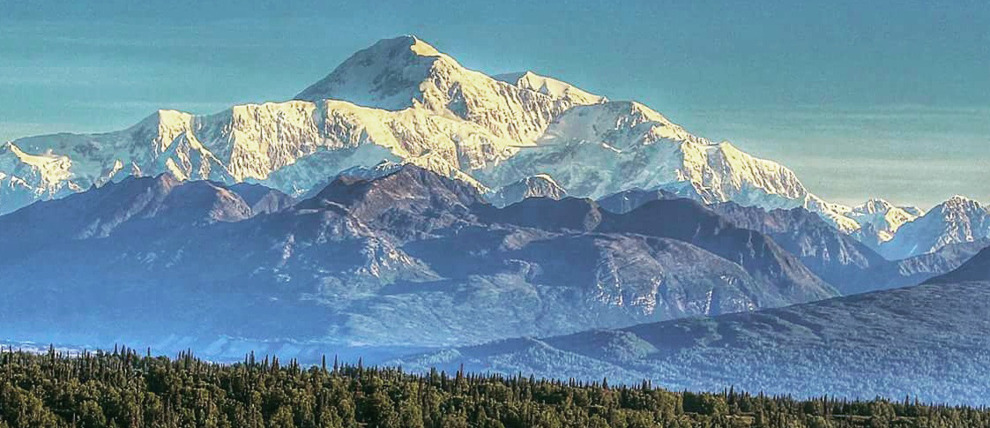
- Premium National Parks Adventure - Tour 122
Delve deeper. Explore more. Experience the state’s remote wonders over eight incomparable days in Alaska.
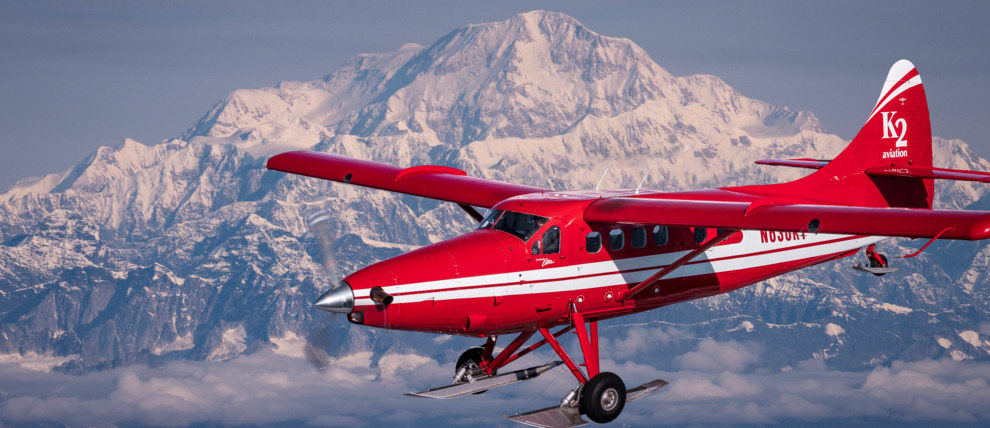
- Alaska Vacations
- Vacation Packages
What's Included
Rates & dates.
- Options & Upgrades
- Add to My Trip
Trip Overview
Over eight days and nights, this Alaska travel package takes visitors from the depths of Denali National Park to the farthest inlets of Kenai Fjords National Park . The package features three nights and two full days to experience the Denali Park area. Modes of travel include deluxe dome train and Park Connection Motorcoach. Along the way, activities range from whitewater rafting and flightseeing to a guided hike and day cruise. The package begins and ends in Anchorage .
Trip Highlights
- Travel into Denali National Park on a guided wildlife tour.
- Hike with a guide in the Denali Park frontcountry and explore even more of the wider area's scenery on a Jeep excursion.
- Travel in style on a deluxe dome train with reserved upper-deck seating.
- Fly from Talkeetna into the Alaska Range aboard a ski plane for flightseeing and glacier landing amongst the tallest mountains in the state.
- Cruise deep blue coastal waters of the Northwestern Fjord on a day tour out of Seward.
- Hike with a local guide to an overlook of Exit Glacier.
Why Pick This Trip
With more time to spend in Denali National Park, this package provides a variety of ways to experience the remoteness and raw beauty of the park, its mountains, and wildlife. The same goes for the quality of excursions, transportation, and handpicked hotels throughout the itinerary. This is one's for the avid traveler ready to be wowed.
Here is everything that is included. Remember, we can easily add or remove services so this vacation package is the perfect fit for your party.
- Collapse All

Anchorage | 1 Night
Just minutes from the Anchorage airport, the Courtyard is a top choice for travelers arriving late or departing early from Anchorage. Learn More >

Depart 8:20 AM | Arrive Denali Park 3:40 PM
Enjoy a reserved seat on the upper deck of a private railcar on this specialty service along the Denali Star route between Anchorage and Denali National Park. Learn More >

Denali Park | Depart 6:30 PM | 3 Hours
Splash through wilder rapids in the Nenana River Gorge on this three-hour trip with Denali's longest-running rafting company. Learn More >

Denali Park | 3 Nights
Enjoy unparalleled hospitality minutes from the Denali National Park entrance. The hotel offers standard hillside and premium deluxe rooms as well as a restaurant serving up the area's best barbeque. Learn More >

Denali Park | Depart 7:40 AM | 3 Hours
Offering active exploration of the unique natural setting of the Denali Park area, guests return from this three-hour walking tour both energized and educated. Learn More >

Denali Park | Depart 1:30 PM | 5 Hours
Fully narrated bus tour with a turnaround point at the historic Murie Cabin deep inside Denali National Park. Learn More >
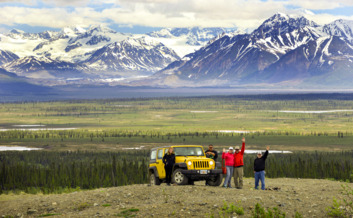
Denali Park | Depart 7:00 AM | 5 Hours
Take the whole family on this fun and fully guided five-hour Jeep Wrangler driving excursion on a scenic route east of Denali National Park. Learn More >

Denali Park | Depart 6:20 PM | 3 Hours
Spend three hours meeting sled dogs (puppies, too!) and learning about the adventurous life of a musher on this tour near Denali Park. Learn More >
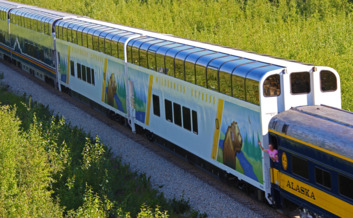
Depart 12:30 PM | Arrive Talkeetna 5:05 PM
Settle in for a relaxing luxury train experience aboard this private railcar service. All passengers enjoy upper-level dome car seating on a southbound trip that takes just over four hours. Learn More >
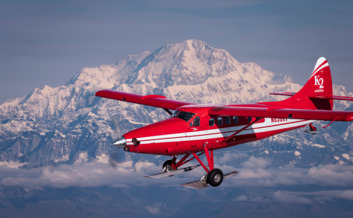
Talkeetna | Depart 6:30 PM | 1 Hour
Land on a glacier deep within the Alaska Range on this unforgettable flightseeing trip out of Talkeetna. Learn More >

Talkeetna | 1 Night
When the mountain is "out" Denali is unmissable from this ridge-top property. The lodge comprises two full-service restaurants, a coffee shop, bar, and comfortable guest rooms with either forest or mountain views. Learn More >
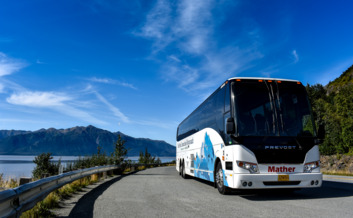
Depart 11:00 AM | Arrive Seward 5:45 PM
Ride in comfort aboard a luxury Park Connection motorcoach offering same-day transfers from Talkeetna to Seward. Learn More >
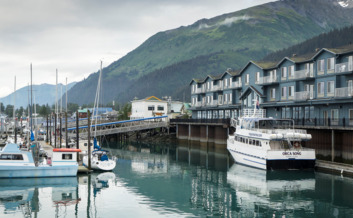
Seward | 2 Nights
Centrally located within walking distance to Seward's major attractions and transfer points, this hotel offers mountain and harbor view rooms along with a complimentary continental breakfast. Learn More >
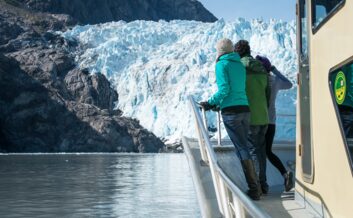
Seward | Depart 8:30 AM | 8 Hours
Explore the farther reaches of Kenai Fjords National Park on this full-day boat trip designed for birders, photographers, and marine wildlife enthusiasts. Learn More >
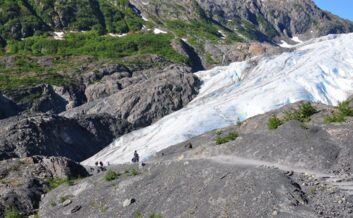
Seward | Depart 11:15 AM | 3 Hours
Explore Kenai Fjords National Park by foot on this two-hour guided hike with views of Exit Glacier. Learn More >
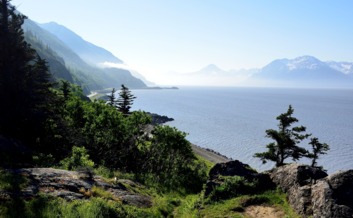
Depart 6:00 PM | Arrive Anchorage 10:15 PM
Relax aboard the northbound Coastal Classic on this scenic evening ride through mountain passes and glacial valleys on the way into Anchorage. Learn More >
Read on for a day-by-day breakdown of this tour package. Click on an item to get started, and be sure to contact us if you have any questions.
Fly into Ted Stevens International Airport and transfer to your hotel by courtesy shuttle. The rest of the day is yours to explore Anchorage at your leisure. Overnight Anchorage.
Settle into your reserved seats aboard a dome train bound for Denali National Park. This evening you'll take advantage of the long daylight hours on an evening Nenana River whitewater rafting trip. Overnight Denali.
Today immerses you in Denali National Park, starting with a morning guided walk through what's known as the park's frontcountry. In the afternoon you'll delve deeper into the park borders on a wildlife bus tour fully narrated by a driver-guide. It's a long but memorable day. Overnight Denali.
You're heading farther afield today. The day starts with a jeep tour down the Denali Highway, a remote gravel road that parallels the eastern Alaska Range. Later in the day you'll keep the classic Alaska adventure going with sled dog kennel tour. Overnight Denali.
This morning enjoy a leisurely ride aboard a deluxe dome train to Talkeetna. Once in Talkeetna, take a flightseeing trip with a glacier landing among the peaks in the south side of Denali National Park. Overnight Talkeetna.
Today is a travel day, with transportation to Seward provided by the Park Connection Motorcoach. The coach leaves late morning and stops for a break in Anchorage before proceeding along the Turnagain Arm, through the Kenai Mountains, and into Seward. Overnight Seward.
This morning you'll trade travel by land for a full-day boat tour out of Seward and into the far reaches of Kenai Fjords National Park. The day's destination is the isolated Northwestern Fjord and the colossal tidewater glaciers flowing into its otherwise calm water. Overnight Seward.
See a different side of Kenai Fjords National Park on a guided hike near the park's only road-accessible glacier. Afterward you'll catch the evening train back to Anchorage. The package concludes with a final overnight in Anchorage.
Check out the map below for a visual overview of this specific tour package. You can see a larger version of the map here , or try our an interactive tour map by using the link below.
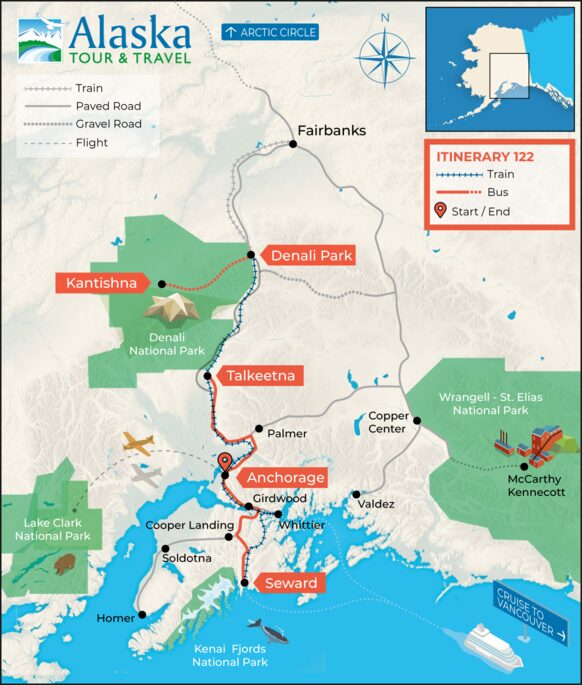
SHOW INTERACTIVE MAP >
The prices below will give you an idea of approximately how much this trip will cost. Keep in mind your actual price will likely vary based on your departure date, availability, and any modifications you make. You can use one of the links below to request an exact quote for your party, or price the trip yourself if you prefer using our My Trip feature. You can often save money by traveling in the value season, typically May and September.
Options and Add-Ons
This is one of our most popular tour packages to Denali and Kenai Fjords, but you can make it even better! We can add or remove services to make it a perfect match for your party. The choices are endless, and just a few suggestions are listed below.
You can make these changes at check out and your final package price will be updated to reflect just the services you choose. Give us a call or request a quote for more specifics.
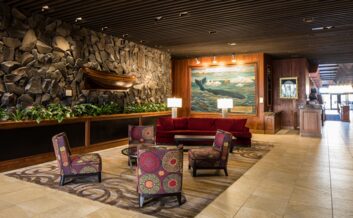
Find Alaskan history and impeccable service along with a restful stay at this high-end Anchorage hotel. Learn More >
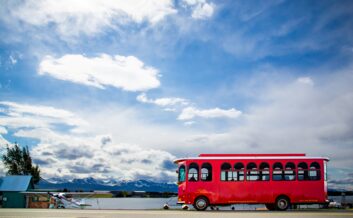
Board a cheerful red trolley for a one-hour Anchorage tour featuring some of the city’s top historic and cultural sites. Learn More >
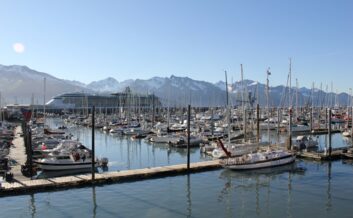
Seward | Depart 11:30 AM | 5 Hours
See Seward's highlights and visit Kenai Fjords National Park on this five-hour city tour. Learn More >
Package Detail
- Tour ID 122
- Price From $3,881 + Tax
- Duration 9 Days / 8 Nights
- Start / End Anchorage / Anchorage
- Departure Dates Daily from 5/19/2024 to 9/2/2024
- Travel By Train, Motorcoach
- Tour Type Self Guided
- Destinations Anchorage, Denali Park, Talkeetna, Seward
Add to My Trip >

Select an option to book or get more details. Questions? Give us a CALL or CONTACT US online.
- Request Quote
- Get Price Online
- Find Similar Trips
- Detailed Itinerary
Photo Gallery

We will keep fighting for all libraries - stand with us!
Internet Archive Audio

- This Just In
- Grateful Dead
- Old Time Radio
- 78 RPMs and Cylinder Recordings
- Audio Books & Poetry
- Computers, Technology and Science
- Music, Arts & Culture
- News & Public Affairs
- Spirituality & Religion
- Radio News Archive

- Flickr Commons
- Occupy Wall Street Flickr
- NASA Images
- Solar System Collection
- Ames Research Center

- All Software
- Old School Emulation
- MS-DOS Games
- Historical Software
- Classic PC Games
- Software Library
- Kodi Archive and Support File
- Vintage Software
- CD-ROM Software
- CD-ROM Software Library
- Software Sites
- Tucows Software Library
- Shareware CD-ROMs
- Software Capsules Compilation
- CD-ROM Images
- ZX Spectrum
- DOOM Level CD

- Smithsonian Libraries
- FEDLINK (US)
- Lincoln Collection
- American Libraries
- Canadian Libraries
- Universal Library
- Project Gutenberg
- Children's Library
- Biodiversity Heritage Library
- Books by Language
- Additional Collections

- Prelinger Archives
- Democracy Now!
- Occupy Wall Street
- TV NSA Clip Library
- Animation & Cartoons
- Arts & Music
- Computers & Technology
- Cultural & Academic Films
- Ephemeral Films
- Sports Videos
- Videogame Videos
- Youth Media
Search the history of over 866 billion web pages on the Internet.
Mobile Apps
- Wayback Machine (iOS)
- Wayback Machine (Android)
Browser Extensions
Archive-it subscription.
- Explore the Collections
- Build Collections
Save Page Now
Capture a web page as it appears now for use as a trusted citation in the future.
Please enter a valid web address
- Donate Donate icon An illustration of a heart shape
Rambles by land and water, or, Notes of travel in Cuba and Mexico [microform] : including a canoe voyage up the river Panuco, and researches among the ruins of Tamaulipas
Bookreader item preview, share or embed this item, flag this item for.
- Graphic Violence
- Explicit Sexual Content
- Hate Speech
- Misinformation/Disinformation
- Marketing/Phishing/Advertising
- Misleading/Inaccurate/Missing Metadata
plus-circle Add Review comment Reviews
Download options.
For users with print-disabilities
IN COLLECTIONS
Uploaded by Unknown on September 25, 2008
SIMILAR ITEMS (based on metadata)
- Skip to main content
- Skip to "About this site"
Language selection
Search travel.gc.ca.
Help us to improve our website. Take our survey !
COVID-19: travel health notice for all travellers

United States travel advice
Latest updates: Editorial change
Last updated: June 5, 2024 15:46 ET
On this page
Safety and security, entry and exit requirements, laws and culture, natural disasters and climate, united states - take normal security precautions.
Take normal security precautions in the United States
Back to top
Border with Mexico
Criminal incidents associated with drug trafficking are more frequent at the border with Mexico, in the following states:
If crossing the U.S.– Mexico border by car:
- remain extremely vigilant
- only use officially recognized border crossings
- avoid travelling at night
Petty crime
Petty crime, such as pickpocketing and purse snatching, occurs, particularly in urban centres and tourist locations.
- Don’t leave bags or valuables unattended in parked cars, especially rental vehicles, even in trunks
- Ensure that your belongings, including passports and other travel documents, are secure at all times
Violent crime
Within large urban areas, violent crime more commonly occurs in poor neighbourhoods, particularly from dusk to dawn. It often involves intoxication. Incidents of violent crime are mainly carried out by gangs or members of organized crime groups but may also be perpetrated by lone individuals. Although violent crime rarely affects tourists:
- be mindful of your surroundings at all time
- verify official neighbourhood crime statistics before planning an outing
- if threatened by robbers, stay calm and don’t resist
Crime Data Explorer – Federal Bureau of Investigation
Gun violence
The rate of firearm possession in the US is high. It’s legal in many states for US citizens to openly carry firearms in public.
Incidences of mass shootings occur, resulting most often in casualties. Although tourists are rarely involved, there is a risk of being in the wrong place at the wrong time.
Familiarize yourself on how to respond to an active shooter situation.
Active Shooter Event Quick Reference Guide - Cybersecurity and Infrastructure Security Agency
Home break-ins
Canadians living in holiday homes have been the victims of break-ins and burglary.
Make sure you lock windows and doors securely at night and when you are away.
Common criminal strategies
Be on alert for robbery ploys targeting visitors.
Some criminals on highways target travellers leaving airports or other tourist destinations. They signal tourists to stop due to an issue with their vehicle. They then wait for the driver to pull over or exit the car before grabbing exposed valuables. Criminals may also throw items at the windshield, obscuring the view of the road and forcing the driver to pull over.
If you’re the victim of such a ploy:
- avoid pulling over on the side of the road
- put on your hazard lights and slowly drive to a gas station, police station or other safe and populated area
Demonstrations
Demonstrations may occur. Even peaceful demonstrations can turn violent at any time. They can also lead to disruptions to traffic and public transportation.
- Avoid areas where demonstrations and large gatherings are taking place
- Follow the instructions of local authorities
- Monitor local media for information on ongoing demonstrations
Mass gatherings (large-scale events)
Credit card and ATM fraud occurs, including debit card cloning. Be cautious when using debit or credit cards:
- pay careful attention when your cards are being handled by others
- use ATMs located in well-lit public areas or inside a bank or business
- avoid using card readers with an irregular or unusual feature
- cover the keypad with one hand when entering your PIN
- check for any unauthorized transactions on your account statements
Overseas fraud
There is a threat of terrorism. Terrorist attacks could occur at any time.
Targets could include:
- government buildings, including schools
- places of worship
- airports and other transportation hubs and networks
- public areas such as tourist attractions, restaurants, bars, coffee shops, shopping centres, markets, and hotels
Always be aware of your surroundings when in public places.
The U.S. Department of Homeland Security (DHS) maintains a public alert system on terrorism to communicate information about terrorist threats.
National Terrorism Advisory System – U.S. Department of Homeland Security
Hiking and mountaineering
If you intend on hiking, backpacking or skiing:
- never practise these activities alone and always hire an experienced guide from a reputable company
- buy travel insurance that includes helicopter rescue and medical evacuation
- obtain detailed information on hiking routes or ski slopes before setting out and do not venture off marked trails or slopes
- ensure that your physical condition is good enough to meet the challenges of your activity
- ensure that you are properly equipped and well informed about weather and other conditions that may pose a hazard
- inform a family member or friend of your itinerary, including when you expect to be back to camp
- know the symptoms of acute altitude sickness, which can be fatal
We do not make assessments on the compliance of foreign domestic airlines with international safety standards.
Information about foreign domestic airlines
Every country or territory decides who can enter or exit through its borders. The Government of Canada cannot intervene on your behalf if you do not meet your destination’s entry or exit requirements.
We have obtained the information on this page from the US authorities. It can, however, change at any time.
Verify this information with the Foreign Representatives in Canada .
You must provide proof of your Canadian citizenship upon entry to the U.S. There are several documents that can satisfy this requirement.
Travel by air
Canadian citizens travelling by air to the United States must present one of the following documents:
- a passport, which must be valid for the duration of their stay
- a valid NEXUS card, used at self-serve kiosks at designated airports
This requirement applies to all Canadian citizens, including children, travelling by air to or even just transiting through the United States.
Useful links
- Canadian passports
- Mobile Passport Control app – U.S. Customs and Border Protection
Travel by land or water
As per the Western Hemisphere Travel Initiative (WHTI), Canadian citizens aged 16 years and older must present one of the following documents when entering the United States by land or water:
- a valid passport
- a Trusted Traveler Program card
- an enhanced driver’s licence (EDL) or enhanced identification card (EIC) from a province or territory where a U.S. approved EDL/EIC program has been implemented
- a Secure Certificate of Indian Status
The WHTI-compliant document you choose to use must be valid for the duration of your stay.
Canadian citizens aged 15 years and under entering the United States by land or water require one of the following documents:
- an original or a copy of a birth certificate
- an original Canadian citizenship certificate
- Western Hemisphere Travel Initiative (WHTI ) – U.S. Customs and Border Protection
- Trusted Traveler Programs – U.S. Customs and Border Protection
- Enhanced Driver’s Licenses: What Are They? – U.S. Department of Homeland Security
- Apply for a Secure Certificate of Indian Status – Indigenous Services Canada
Other travel documents
Different entry rules may apply when travelling with a temporary passport or an emergency travel document. Before you leave, check with the closest diplomatic mission for your destination.
- Foreign representatives in Canada
Additional information at borders
Customs officials may ask you to provide your address while in the United States (including Puerto Rico). Customs Border Protection (CBP) officers may also ask for:
- evidence of residential, employment or educational ties to Canada
- proof that the trip is for a legitimate purpose and is of a reasonable length
- proof of sufficient funds to cover your stay
Dual citizens
Although U.S. authorities don’t formally require dual nationals to carry both a U.S. and a Canadian passport, carrying both documents as proof of citizenship may facilitate your entry into the United States and your return to Canada.
- Travelling as a dual citizen
- Dual Nationality – U.S. Department of State, Bureau of Consular Affairs
Canadian visitors can usually stay in the United States for 6 months without a visa. You must declare your intended duration of stay upon entry into the United States.
In most circumstances, Canadian citizens don’t require visitor, business, transit or other visas to enter the United States from Canada but there are some exceptions.
Canadians Requiring Visas – U.S. Embassy & Consulates in Canada
Canadian permanent residents
Canadian permanent residents may need a non-immigrant visa to enter the United States.
You must obtain this visa from the U.S. authorities before entering the country. You must also have a valid passport from your country of citizenship.
Cross U.S. Borders – U.S. Customs and Border Protection
Visa Waiver Program
If you are a citizen of a country that is part of the visa waiver program (VWP), you don’t need a visa to enter the U.S. for stays up to 90 days. Instead, you must obtain pre-travel authorization via the Electronic System for Travel Authorization (ESTA) prior your departure.
- Visa Waiver Program – U.S. Customs and Border Protection
- Countries participating in the Visa Waiver Program – U.S. Customs and Border Protection
- Electronic System for Travel Authorization (ESTA) – U.S. Department of Homeland Security
You must also carry proof of Permanent Resident Status in Canada upon re-entry into Canada.
U.S. permanent residents
Canadians who are permanent residents of the United States must present a valid U.S. permanent resident card upon entry.
International travel as a U.S. Permanent Resident – U.S. Citizenship and Immigration Services
First Nations and Native Americans born in Canada
Members of Canada’s First Nations and Native Americans born in Canada may freely enter the United States for the purposes of employment, study, retirement, investing, or immigration.
- Entry and exit for First Nations and Native Americans – U.S. Embassy & Consulates in Canada
- Green Card for an American Indian Born in Canada – U.S. Citizenship and Immigration Services
Working in the United States
Most Canadian business travellers may apply for admission at a U.S. port of entry without first obtaining a non-immigrant visa. However, travellers entering the United States in certain business-related categories are required to present specific documents to establish eligibility for admission.
If you plan to work in the United States, contact the nearest U.S. embassy or consulate for specific requirements.
- Foreign Representatives in Canada
Studying in the United States
Canadian citizens don’t need visas to study or participate in a student exchange program in the United States. However, they need to be registered with SEVIS, a U.S. student tracking system. Students must present their registration form to CBP officers each time they enter the United States.
- SEVIS – U.S. Department of Homeland Security
- Canadian students – U.S. Embassy & Consulates in Canada
Length of stay
If you wish to stay longer than 6 months, you must apply for an extension at the nearest U.S. Citizenship and Immigration Services (USCIS) office once you are in the United States and before the expiry of your initial authorized stay. Immigration officers may ask you to demonstrate that you are a temporary visitor in the United States.
The U.S. government strictly enforces immigration regulations. Remaining in the United States beyond your authorized period of stay can result in serious consequences such as detention or deportation.
There is no set period that you must wait to re-enter the United States after the end of your authorized stay. However, if a CBP officer suspects you are spending more time in the United States than in Canada, it will be up to you to prove to the officer that you are a temporary visitor, not a U.S. resident.
Extend your stay – U.S. Citizenship and Immigration Services
Upon entry into the United States, non-U.S. citizens must provide biometrics, such as digital fingerprints and a photograph.
Most Canadian citizens are exempt from this requirement. However, it will apply to Canadian citizens who:
- need a visa or a waiver of ineligibility
- must obtain an I-94 Arrival/Departure Record form to document dates of entry and exit from the country
Random screenings of exempt Canadians have occurred at border crossings and airports. If you feel that your information has been wrongfully collected, you can address the issue directly with the U.S. Department of Homeland Security.
- Biometrics – U.S. Department of Homeland Security
- Arrival/Departure Forms: I-94 and I-94W – U.S. Customs and Border Protection
Electronic devices
U.S. border agents are entitled to search your electronic devices, such as your phones, computers or tablets, when you are entering the United States. They don’t need to provide a reason when requesting a password to open your device.
If you refuse, they may seize your device. The border agent could also delay your travel or deny entry if you are not a U.S. citizen.
Before crossing the border, put your device in airplane mode to ensure remote files don’t get downloaded accidentally.
Inspection of Electronic Devices – U.S. Customs and Border Protection
Preclearance
The preclearance service provides clearance for entry into the United States for persons and their luggage at a Canadian preclearance airport before departure instead of on arrival in the United States.
When using U.S. preclearance facilities at a Canadian airport, you must meet U.S. entry requirements. You will be interviewed by a U.S. preclearance officer. They are authorized to inspect your luggage and can refuse you entry into the United States.
It’s an offence under Canada’s Preclearance Act to knowingly make a false or deceptive statement to a preclearance officer. While you are in a preclearance area, you are subject to Canadian law, including:
- the Canadian Charter of Rights and Freedoms
- the Canadian Bill of Rights
- the Canadian Human Rights Act
- Canada’s Preclearance Act
- Canadian criminal law
You may withdraw your request to enter the United States and leave the preclearance area at any time unless a U.S. preclearance officer suspects on reasonable grounds that you have made a false or deceptive statement or obstructed an officer. The officer may then detain you for violations of Canadian law.
Preclearance Locations – U.S. Customs and Border Protection
Criminal Record
If you have a criminal record, no matter the severity or the date of the offence, you may be refused entry to the United States. You may also experience problems when travelling through U.S. airport facilities. A pardon for an offence issued by Canadian authorities is not recognized under U.S. law to enter the United States.
If you are ineligible to enter the United States, you may apply directly to U.S. Customs and Border Protection for a temporary waiver of inadmissibility via the nearest U.S. embassy or consulate. Canadian citizens may also apply at land borders.
U.S. ports of entry are computerized and connected to a centralized database. Information is readily available on criminal convictions in both Canada and the United States. Even though you may have entered the United States without hindrance in the past, you could run into difficulty if your record shows a criminal conviction or a previous denial of entry. Attempting to gain entry without a waiver could result in several weeks of detention and a permanent ban from entering the United States.
- Applying for Waiver – Person entering into the United States with criminal record or overstay – U.S. Customs and Border Protection
Previous use of cannabis, or any substance prohibited by U.S. federal laws, could mean that you are denied entry to the U.S. If you attempt to enter the U.S. for reasons related to the cannabis industry, you may be deemed inadmissible.
- Cannabis and international travel
- Cannabis and the U.S. – U.S. Embassy and Consulates in Canada
- Laws pertaining to cannabis
Boating in U.S. waters
Operators of small pleasure vessels arriving in the United States from a foreign port must report their arrival to U.S. Customs and Border Protection immediately for face-to-face inspection at a designated reporting location.
Some exceptions apply, including under Nexus Marine.
Pleasure Boat Reporting Requirements – U.S. Customs and Border Protection
You must have a valid Canadian passport to take a cruise from the United States. Some of the countries you visit will not permit entry without a passport. A passport is also important to re-enter the United States at the end of the cruise.
Ship authorities might retain your passport during the cruise, in accordance with their own administrative regulations and to facilitate clearance with U.S. Immigration.
If your passport is kept:
- obtain a receipt
- ensure you recuperate your passport at the end of the cruise
- always keep a photocopy of your passport with you
When examined at a port of entry, cats and dogs must show no signs of diseases communicable to humans. If there is evidence of poor animal health, you may need to get your pet examined by a licensed veterinarian, at your own expense. U.S. authorities may also require a health certificate.
Dogs must be vaccinated against rabies at least 30 days before entry, except for puppies under 3 months of age. Vaccination against rabies is not required for cats.
Other animals are also subject to controls or quarantine requirements.
Bringing Pets and Wildlife into the United States – U.S. Customs and Border Protection
- Children and travel
Canadian citizens under 19 travelling with a school or other organized group under adult supervision must travel with written consent from their own parent/guardian.
- Children: Traveling into the U.S. as Canadian Citizen – U.S. Customs and Border Protection
- Consent letter for travel with children
- Travelling with children
Yellow fever
Learn about potential entry requirements related to yellow fever (vaccines section).
Relevant Travel Health Notices
- Global Measles Notice - 13 March, 2024
- Zika virus: Advice for travellers - 31 August, 2023
- COVID-19 and International Travel - 13 March, 2024
This section contains information on possible health risks and restrictions regularly found or ongoing in the destination. Follow this advice to lower your risk of becoming ill while travelling. Not all risks are listed below.
Consult a health care professional or visit a travel health clinic preferably 6 weeks before you travel to get personalized health advice and recommendations.
Routine vaccines
Be sure that your routine vaccinations , as per your province or territory , are up-to-date before travelling, regardless of your destination.
Some of these vaccinations include measles-mumps-rubella (MMR), diphtheria, tetanus, pertussis, polio, varicella (chickenpox), influenza and others.
Pre-travel vaccines and medications
You may be at risk for preventable diseases while travelling in this destination. Talk to a travel health professional about which medications or vaccines may be right for you, based on your destination and itinerary.
Yellow fever is a disease caused by a flavivirus from the bite of an infected mosquito.
Travellers get vaccinated either because it is required to enter a country or because it is recommended for their protection.
- There is no risk of yellow fever in this country.
Country Entry Requirement*
- Proof of vaccination is not required to enter this country.
Recommendation
- Vaccination is not recommended.
* It is important to note that country entry requirements may not reflect your risk of yellow fever at your destination. It is recommended that you contact the nearest diplomatic or consular office of the destination(s) you will be visiting to verify any additional entry requirements.
About Yellow Fever
Yellow Fever Vaccination Centres in Canada
Measles is a highly contagious viral disease. It can spread quickly from person to person by direct contact and through droplets in the air.
Anyone who is not protected against measles is at risk of being infected with it when travelling internationally.
Regardless of where you are going, talk to a health care professional before travelling to make sure you are fully protected against measles.
Hepatitis B is a risk in every destination. It is a viral liver disease that is easily transmitted from one person to another through exposure to blood and body fluids containing the hepatitis B virus. Travellers who may be exposed to blood or other bodily fluids (e.g., through sexual contact, medical treatment, sharing needles, tattooing, acupuncture or occupational exposure) are at higher risk of getting hepatitis B.
Hepatitis B vaccination is recommended for all travellers. Prevent hepatitis B infection by practicing safe sex, only using new and sterile drug equipment, and only getting tattoos and piercings in settings that follow public health regulations and standards.
The best way to protect yourself from seasonal influenza (flu) is to get vaccinated every year. Get the flu shot at least 2 weeks before travelling.
The flu occurs worldwide.
- In the Northern Hemisphere, the flu season usually runs from November to April.
- In the Southern Hemisphere, the flu season usually runs between April and October.
- In the tropics, there is flu activity year round.
The flu vaccine available in one hemisphere may only offer partial protection against the flu in the other hemisphere.
The flu virus spreads from person to person when they cough or sneeze or by touching objects and surfaces that have been contaminated with the virus. Clean your hands often and wear a mask if you have a fever or respiratory symptoms.
Coronavirus disease (COVID-19) is an infectious viral disease. It can spread from person to person by direct contact and through droplets in the air.
It is recommended that all eligible travellers complete a COVID-19 vaccine series along with any additional recommended doses in Canada before travelling. Evidence shows that vaccines are very effective at preventing severe illness, hospitalization and death from COVID-19. While vaccination provides better protection against serious illness, you may still be at risk of infection from the virus that causes COVID-19. Anyone who has not completed a vaccine series is at increased risk of being infected with the virus that causes COVID-19 and is at greater risk for severe disease when travelling internationally.
Before travelling, verify your destination’s COVID-19 vaccination entry/exit requirements. Regardless of where you are going, talk to a health care professional before travelling to make sure you are adequately protected against COVID-19.
In this destination, rabies may be present in some wildlife species, including bats. Rabies is a deadly disease that spreads to humans primarily through bites or scratches from an infected animal.
If you are bitten or scratched by an animal while travelling, immediately wash the wound with soap and clean water and see a health care professional.
Before travel, discuss rabies vaccination with a health care professional. It may be recommended for travellers who will be working directly with wildlife.
Polio (poliomyelitis) is an infectious disease that can be prevented by vaccination. It is caused by poliovirus type 1, 2 or 3. Circulating vaccine-derived poliovirus 2 (cVDPV2) is present in this country. Polio is spread from person to person and through contaminated food and water. Infection with the polio virus can cause paralysis and death in individuals of any age who are not immune.
Recommendations:
- Be sure that your polio vaccinations are up to date before travelling. Polio is part of the routine vaccine schedule for children in Canada.
- One booster dose of the polio vaccine is recommended as an adult .
Safe food and water precautions
Many illnesses can be caused by eating food or drinking beverages contaminated by bacteria, parasites, toxins, or viruses, or by swimming or bathing in contaminated water.
- Learn more about food and water precautions to take to avoid getting sick by visiting our eat and drink safely abroad page. Remember: Boil it, cook it, peel it, or leave it!
- Avoid getting water into your eyes, mouth or nose when swimming or participating in activities in freshwater (streams, canals, lakes), particularly after flooding or heavy rain. Water may look clean but could still be polluted or contaminated.
- Avoid inhaling or swallowing water while bathing, showering, or swimming in pools or hot tubs.
Insect bite prevention
Many diseases are spread by the bites of infected insects such as mosquitoes, ticks, fleas or flies. When travelling to areas where infected insects may be present:
- Use insect repellent (bug spray) on exposed skin
- Cover up with light-coloured, loose clothes made of tightly woven materials such as nylon or polyester
- Minimize exposure to insects
- Use mosquito netting when sleeping outdoors or in buildings that are not fully enclosed
To learn more about how you can reduce your risk of infection and disease caused by bites, both at home and abroad, visit our insect bite prevention page.
Find out what types of insects are present where you’re travelling, when they’re most active, and the symptoms of the diseases they spread.
Zika virus may be a risk in some areas of the United States.
Zika virus is primarily spread through the bite of an infected mosquito. It can also be sexually transmitted. Zika virus can cause serious birth defects.
Visit the Centers for Disease Control and Prevention’s webpage Areas at Risk for Zika for the most up-to-date information on Zika risk in the United States.
During your trip to a Zika risk area:
- Prevent mosquito bites at all times.
- Use condoms correctly or avoid sexual contact, particularly if you are pregnant.
If you are pregnant or planning a pregnancy, you should discuss the potential risks of travelling to areas where Zika is a risk with your health care provider. You may choose to avoid or postpone travel to these areas.
For more information, see Zika virus: Pregnant or planning a pregnancy .
- In this country, risk of dengue is sporadic. It is a viral disease spread to humans by mosquito bites.
- Dengue can cause flu-like symptoms. In some cases, it can lead to severe dengue, which can be fatal.
- Visit the Centers for Disease Control and Preventions webpage on Dengue in the U.S. States and Territories for the most up-to-date information on dengue outbreaks in the United States
- Mosquitoes carrying dengue typically bite during the daytime, particularly around sunrise and sunset.
- Protect yourself from mosquito bites . There is no vaccine or medication that protects against dengue fever.
Animal precautions
Some infections, such as rabies and influenza, can be shared between humans and animals. Certain types of activities may increase your chance of contact with animals, such as travelling in rural or forested areas, camping, hiking, and visiting wet markets (places where live animals are slaughtered and sold) or caves.
Travellers are cautioned to avoid contact with animals, including dogs, livestock (pigs, cows), monkeys, snakes, rodents, birds, and bats, and to avoid eating undercooked wild game.
Closely supervise children, as they are more likely to come in contact with animals.
Human cases of avian influenza have been reported in this destination. Avian influenza is a viral infection that can spread quickly and easily among birds and in rare cases it can infect mammals, including people. The risk is low for most travellers.
Avoid contact with birds, including wild, farm, and backyard birds (alive or dead) and surfaces that may have bird droppings on them. Ensure all poultry dishes, including eggs and wild game, are properly cooked.
Travellers with a higher risk of exposure include those:
- visiting live bird/animal markets or poultry farms
- working with poultry (such as chickens, turkeys, domestic ducks)
- hunting, de-feathering, field dressing and butchering wild birds and wild mammals
- working with wild birds for activities such as research, conservation, or rehabilitation
- working with wild mammals, especially those that eat wild birds (e.g., foxes)
All eligible people are encouraged to get the seasonal influenza shot, which will protect them against human influenza viruses. While the seasonal influenza shot does not prevent infection with avian influenza, it can reduce the chance of getting sick with human and avian influenza viruses at the same time.
Person-to-person infections
Stay home if you’re sick and practise proper cough and sneeze etiquette , which includes coughing or sneezing into a tissue or the bend of your arm, not your hand. Reduce your risk of colds, the flu and other illnesses by:
- washing your hands often
- avoiding or limiting the amount of time spent in closed spaces, crowded places, or at large-scale events (concerts, sporting events, rallies)
- avoiding close physical contact with people who may be showing symptoms of illness
Sexually transmitted infections (STIs) , HIV , and mpox are spread through blood and bodily fluids; use condoms, practise safe sex, and limit your number of sexual partners. Check with your local public health authority pre-travel to determine your eligibility for mpox vaccine.
Medical services and facilities
Health care is excellent. Service is available throughout the country. However, treatment costs are expensive.
All hospitals must accept and treat emergencies, regardless of the person’s ability to pay. Clients will, however, be charged for all services rendered. Foreign visitors without travel health insurance will have to pay out of pocket for their medical treatment.
Make sure you get travel insurance that includes coverage for medical evacuation and hospital stays.
Travel health and safety
There are restrictions and prohibitions on the import of certain prescription drugs into the United States.
Some medication that can be purchased over-the-counter in Canada is restricted to prescription-only status in the United States.
- Bring sufficient quantities of your medication
- Ensure to have a physician’s note explaining your medical condition, if applicable
Keep in Mind...
The decision to travel is the sole responsibility of the traveller. The traveller is also responsible for his or her own personal safety.
Be prepared. Do not expect medical services to be the same as in Canada. Pack a travel health kit , especially if you will be travelling away from major city centres.
You must abide by local laws.
Learn about what you should do and how we can help if you are arrested or detained abroad .
Laws vary greatly from state to state. Consult the website of the state you wish to visit prior to arrival.
Penalties and transfer of offenders
A serious violation of the law may lead to a jail sentence or, in some states, a death sentence. Canadian citizenship confers no immunity, special protection or rights to preferential treatment.
If a jail sentence is imposed, it will be served in a U.S. prison, unless a request for a transfer to a Canadian prison is approved by the United States and Canada. Both countries have signed a treaty that permits a Canadian imprisoned in the United States to request a transfer to complete the sentence in a Canadian prison.
Penalties for possession, use or trafficking of illegal drugs are severe. Convicted offenders can expect lengthy jail sentences and heavy fines.
Drugs, alcohol and travel
Although the possession of cannabis is legal in some U.S. states, it remains illegal under U.S. federal laws in any form and quantity, making it illegal to bring across the Canada-U.S. border.
Don’t attempt to cross the Canada-U.S. border with any amount of cannabis in any form, even if you are traveling to a U.S. state that has legalized possession of cannabis. If you do so, you can expect legal prosecution and fines, and possibly jail time.
- Entry/exit requirements pertaining to cannabis
Prescription medication
Personal medication may be subject to U.S. drug importation laws and regulations.
In general, personal importation of a 90-day supply of medication is allowed. U.S. Customs and Border Protection has absolute discretion to allow or not your Canadian-purchased medication into the United States.
When taking any prescription medication to the United States, it’s important to:
- take only the quantity that you would normally take for the number of days you will be in the United States, plus an additional week’s worth
- pack medicines in their original packaging with the dispensary label intact that shows your name and other pertinent information such as the drug’s name, dosage and DIN (drug identification number)
- keep a duplicate of your original prescription, listing both the generic and trade names of the drug
- have a physician’s note explaining your condition and the reason for you to be legitimately carrying syringes, if applicable
Prohibited and restricted items – U.S. Customs and Border Protection
2SLGBTQI+ travellers
Some states have enacted laws and policies that may affect 2SLGBTQI+ persons. Check relevant state and local laws.
Travel and your sexual orientation, gender identity, gender expression and sex characteristics
Dual citizenship
Dual citizenship is legally recognized in the United States .
If you are a Canadian citizen, but also a citizen of the United States , our ability to offer you consular services may be limited while you're there. You may also be subject to different entry/exit requirements .
- General information for travellers with dual citizenship
International Child Abduction
The Hague Convention on the Civil Aspects of International Child Abduction is an international treaty. It can help parents with the return of children who have been removed to or retained in certain countries in violation of custody rights. The convention applies between Canada and the United States.
If your child was wrongfully taken to, or is being held in the United States, and if the applicable conditions are met, you may apply for the return of your child to the American court.
If you are in this situation:
- act as quickly as you can
- contact the Central Authority for your province or territory of residence for information on starting an application under The Hague Convention
- consult a lawyer in Canada and in the United States to explore all the legal options for the return of your child
- report the situation to the nearest Canadian government office abroad or to the Vulnerable Children's Consular Unit at Global Affairs Canada by calling the Emergency Watch and Response Centre
If your child was removed from a country other than Canada, consult a lawyer to determine if The Hague Convention applies.
Be aware that Canadian consular officials cannot interfere in private legal matters or in another country's judicial affairs.
- List of Canadian Central Authorities for the Hague Convention
- International Child Abductions: A guide for affected parents
- The Hague Convention – Hague Conference on Private International Law
- Canadian embassies and consulates by destination
- Request emergency assistance
Expedited removal
U.S. Customs and Border Protection can bar non-citizens from the United States for five years if, in their judgment, the individuals presented false documentation or misrepresented themselves. Lying to a customs official is a serious offence.
There is no formal appeal process under expedited removal. However, if you believe the law has been misapplied in your case, you can request a supervisory review by writing to the U.S. Citizenship and Immigration Services district director responsible for the port of entry where the decision was made.
Find a USCIS office – U.S. Citizenship and Immigration Services
Imports and exports
Contact the specific U.S. Customs and Border Protection office at the Canada/U.S. border crossing you are planning to use before starting your trip for the latest information on allowances and restrictions on bringing items into the United States. These change frequently.
Declare all items at your point of entry.
Contact information for USCBP – U.S. Customs and Border Protection
Travel to Cuba from the United States
Existing U.S. sanctions restrict travel between the United States and Cuba. Tourists may not travel between the two countries. However, you may go to Cuba from the United States on other types of travel, if you meet certain requirements.
Cuba sanctions – U.S. Department of the Treasury
You can drive in the United States if you have a valid Canadian driver’s license.
Traffic laws can vary from state to state.
Automobile insurance
Many states have mandatory automobile insurance requirements, and many require motorists to carry appropriate proof of insurance. Each state’s motor vehicles department can give you more specific information.
If you are in the United States and wish to drive to Mexico in your personal vehicle, you may need to purchase liability insurance and additional auto insurance.
- Foreign Nationals Driving in the U.S. – U.S. government
- States’ motor vehicle department – U.S. government
- Canadian Automobile Association
- American Automobile Association
- Road safety risks when travelling by land to Mexico
- Travel advice for Mexico
Hitchhiking
Never cross the border with a hitchhiker or as a hitchhiker. Though you may not be carrying anything illegal, the hitchhiker or driver might be, and you could be implicated.
Be equally careful about who and what you carry in your vehicle. As the driver, you could be held responsible for the misdeeds and belongings of your passengers, even if you were unaware of the problem.
The currency in the United States is the U.S. dollar (USD).
Canadian currency and personal cheques from Canadian banks are not widely accepted. Most banking transactions require a U.S. bank account.
There’s no limit to the amount of money that you may legally take into or out of the United States. However, you must declare to U.S. Customs and Border Protection:
- if you carry more than US$10,000 (in cash, cheque, money order, travellers’ cheque or any other convertible asset) into or out of the United States
- if you will receive more than US$10,000 while in the United States
Failure to comply can result in civil and criminal penalties, including seizure of the currency or monetary instruments.
Natural disasters can occur at any time.
Plan Ahead for Disasters – U.S. Department of Homeland Security
Hurricanes usually occur from:
- May to November in the eastern Pacific Ocean, including Hawaii and Guam
- June to November in the Atlantic Ocean, the Caribbean Sea and the Gulf of Mexico
These severe storms can put you at risk and hamper the provision of essential services.
If you decide to travel to these regions during the hurricane season:
- know that you expose yourself to serious safety risks
- be prepared to change your travel plans on short notice, including cutting short or cancelling your trip
- stay informed of the latest regional weather forecasts
- carry emergency contact information for your airline or tour operator
- follow the advice and instructions of local authorities
- Tornadoes, cyclones, hurricanes, typhoons and monsoons
- Large-scale emergencies abroad
- Latest advisories – U.S. National Hurricane Center
- US National Weather Service
Seasonal flooding can hamper overland travel and reduce the provision of essential services. Roads may become impassable and bridges damaged.
- Stay away from flooded areas
- Follow the advice of local authorities
- Monitor local news to stay up-to-date on the current situation
Earthquakes
Earthquakes pose a risk in the following states:
- Washington State
If you’re in an area prone to earthquakes, familiarize yourself with emergency procedures.
- Earthquake - Get prepared
- Earthquakes – Federal Emergency Management
Heat and humidity
Humidity and heat may be most severe during the hot season, from June to September, particularly in the South and South-West of the country.
Know the symptoms of dehydration and heatstroke, which can both be fatal.
- Sun and heat safety tips for travellers – Government of Canada
- Heat & Health Tracker – Centers for Disease Control and Prevention
Bush and forest fires
Bush and forest fires are common and a risk across much of the United States, particularly during the summer months.
Wildfires can occur year-round but they are most common during periods of low rainfall and high temperatures.
The air quality in areas near active fires may deteriorate due to heavy smoke. In case of a major fire:
- stay away from the affected area, particularly if you suffer from respiratory ailments
- always follow the instructions of local emergency services personnel, including any evacuation order
- monitor local media for up-to-date information on the situation
- Forest fire information - National Interagency Fire Centre
- National Wildfire Risk Index – Federal Emergency Management Agency
- Latest wildfire information - United States National Wildfire Coordinating Group
- Map of wildfires – Fire weather & Avalanche Center
- California forest fires – California Department of Forestry and Fire Protection
Tornadoes pose a risk in states east of the Rocky Mountains, particularly in:
- Mississippi
U.S. National Weather Service
There are several active volcanoes in the United States.
In the event of a volcanic eruption, ash could lead to air travel disruptions. The air quality may deteriorate and affect you, especially if you suffer from respiratory ailments.
- Monitor local media for the latest updates
- Follow the advice of local authorities, including evacuation order
- Be prepared to modify your travel arrangements or even evacuate the area on short notice
- Volcanic eruptions - U.S. National Park Service
- Vog – Government of Hawaii
Tsunamis
The state of Hawaii is prone to tsunamis. A tsunami can occur within minutes of a nearby earthquake. However, the risk of tsunami can remain for several hours following the first tremor.
If you’re staying on the coast, familiarize yourself with the region’s evacuation plans in the event of a tsunami warning.
Tsunami Evacuation Zones – Government of Hawaii
Local services
Dial 911 for emergency assistance.
Consular assistance
Delaware, District of Columbia, Maryland, Virginia and West Virginia.
Alabama, Georgia, Mississippi, North Carolina, South Carolina, Tennessee.
Illinois, Indiana (Jasper, Lake, Laporte, Newton, and Porter counties), Kansas City, Kansas, Missouri, Wisconsin.
Colorado, Kansas, Montana, Utah, Wyoming.
Indiana (excluding Jasper, Lake, LaPorte, Newton and Porter counties), Kentucky, Michigan, Ohio.
Arizona, Nevada, Southern California
Florida, Puerto Rico, US Virgin Islands
Bermuda, Connecticut, New Jersey, New York State and Pennsylvania.
Northern California, Hawaii.
Alaska, Idaho, Oregon, Washington.
For emergency consular assistance, call the Embassy of Canada to the United States, in Washington, and follow the instructions. At any time, you may also contact the Emergency Watch and Response Centre in Ottawa.
You may call the Emergency Watch and Response Centre in Ottawa toll-free at 1-888-949-9993.
The decision to travel is your choice and you are responsible for your personal safety abroad. We take the safety and security of Canadians abroad very seriously and provide credible and timely information in our Travel Advice to enable you to make well-informed decisions regarding your travel abroad.
The content on this page is provided for information only. While we make every effort to give you correct information, it is provided on an "as is" basis without warranty of any kind, expressed or implied. The Government of Canada does not assume responsibility and will not be liable for any damages in connection to the information provided.
If you need consular assistance while abroad, we will make every effort to help you. However, there may be constraints that will limit the ability of the Government of Canada to provide services.
Learn more about consular services .
Risk Levels
take normal security precautions.
Take similar precautions to those you would take in Canada.
Exercise a high degree of caution
There are certain safety and security concerns or the situation could change quickly. Be very cautious at all times, monitor local media and follow the instructions of local authorities.
IMPORTANT: The two levels below are official Government of Canada Travel Advisories and are issued when the safety and security of Canadians travelling or living in the country or region may be at risk.
Avoid non-essential travel
Your safety and security could be at risk. You should think about your need to travel to this country, territory or region based on family or business requirements, knowledge of or familiarity with the region, and other factors. If you are already there, think about whether you really need to be there. If you do not need to be there, you should think about leaving.
Avoid all travel
You should not travel to this country, territory or region. Your personal safety and security are at great risk. If you are already there, you should think about leaving if it is safe to do so.

Spend Your Summer On Lake Barkley and Discover the Land Between the Lakes
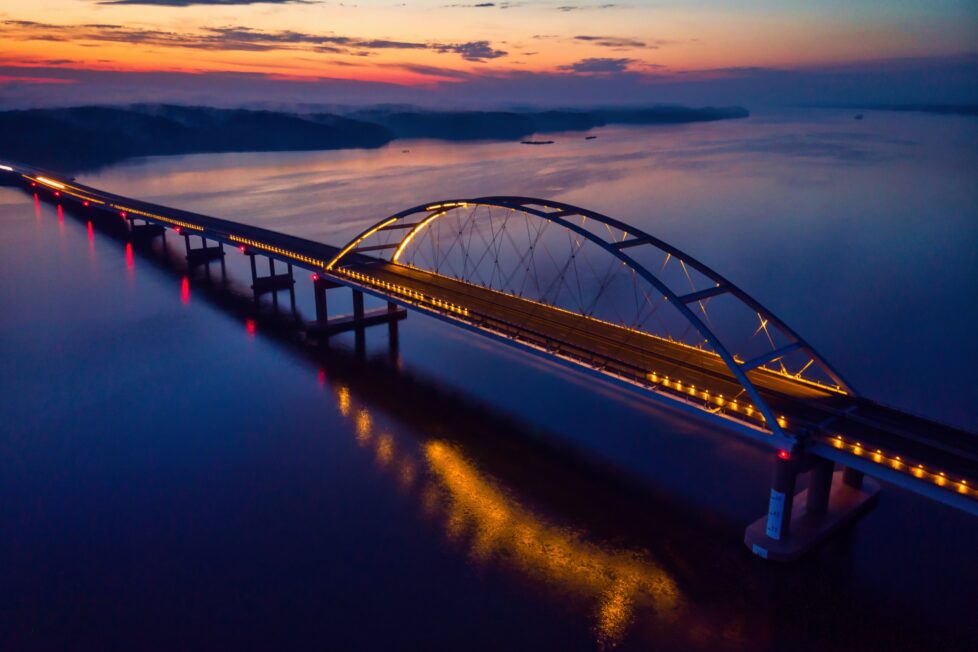
As summer temperatures warm, days stretch out, and boats are brought out of their winter storage, it is time, once again, to consider the many activities offered by our beloved Land Between the Lands area, known locally as simply the “LBL”. Here in Cadiz—the small town that also serves as the gateway to the famous Lake Barkley—you can enjoy one of the nation’s most significant fishing locales as well as a body of water beloved by boating enthusiasts worldwide. Camping is also always in season in the LBL, and there are several campgrounds and cabins to choose from including the Wrangles Campground, Turkey Bay (mentioned in more detail below), Hurricane Creek, and Energy Lake, just to name a few.
About The Star: Lake Barkley
As the star of the LBL area, Lake Barkley is worth mentioning all on its own. This stunning body of water makes up over 57,900 acres of water and stretches 118 miles long, making it an extremely “ tall” lake. The more than 1,000 miles of shorelines surrounding the lake provide ample opportunities for fishing and boating for water enthusiasts of all types to enjoy. Taking a satellite view and looking down at the earth, Lake Barkley serves as the easternmost border of the Land Between the Lakes National Recreation Area . This “ water playground, ” also known as Lake Barkley, features sandy beaches and more, making it an ideal spot for summer visitors. Water skiers, wave-makers, jet skiers, wave borders, and even water tubers enjoy this spacious body of water.
Non-Water Appeal, Hit The Trails
While the LBL is admittedly water-focused when it comes to sports and fun activities, as its name would suggest, that isn’t to say there isn’t anything available for those of you who prefer to keep your feet dry. There are countless trails and loops to explore in the region which allow you to either bike or hike to your heart’s content. These beautiful trails wind in and out of forested landscape and even feature some options with gentle grades and shoreline views of Lake Barkley. The Fort Henry Trail System, encompassing 26 miles and 10 different trails, is considered the best trail system in the entire area. For an even greater challenge, try the North South Trail, known as the grand tour, with a length of 65 miles. You can access portions from The Trace, which means you can pick out a section to hike and enjoy without committing to the entire length.
Don’t Forget About Turkey Bay, Go Off-Roading
If you want to branch out even more and want to try something adventurous, visit the Tukey Bay OHV Area , featuring more than 100 miles of jeep and ATV trails. These super fun off-highway vehicles are an adrenaline junkie’s dream. However, even if you have never before ridden such a vehicle, there are still options for you, thanks to the OHV trails for beginners. These less advanced trails offer families the opportunity to ride together and explore the LBL as a group. In fact, the Youth Trot Trail, which is a half-mile kids riding and learning trail, is where inexperienced riders learn basic techniques and is ideal for beginners.
Dining in the LBL
With all the many activities the Land Between the Lakes offers, it’s likely you will work up a healthy appetite when staying here. That’s no problem because there are many dining options, such as fun, themed eateries and independently-owned restaurants . Here, in this one destination, Cadiz, Kentucky, foodies of all shapes and sizes will find plenty to enjoy, including authentic Mexican locations, southern downhome cookin’ establishments, juicy ribeye’s, gourmet food, BBQ, and even generational burger joints. All of these and more are within close proximity when you jump off the freeway to see what Cadiz has to offer.
Suffice it to say that there is plenty to explore, enjoy, eat and more all in and around the LBL, Cadiz, Kentucky area in Trigg County. If you love beautiful scenery, fabulous eateries, fun activities, and comfortable furnishings, you will love this destination!
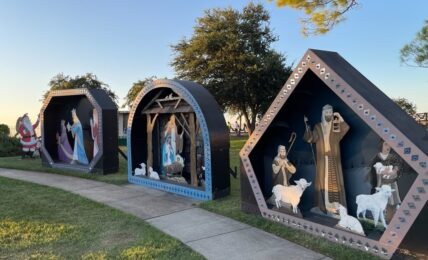
Natchez is known for its delicious Southern cuisine & warm, welcoming people.
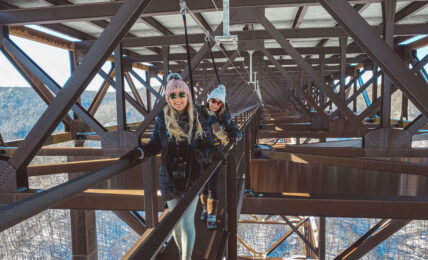
Fayetteville, West Virginia is a charming and adventure packed town for all…
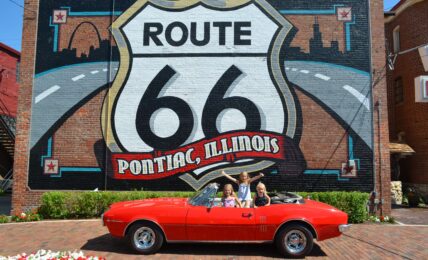
Heritage Corridor, IL
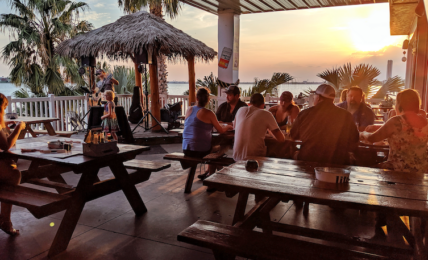
Bay Area Houston – Our Baycations are Better
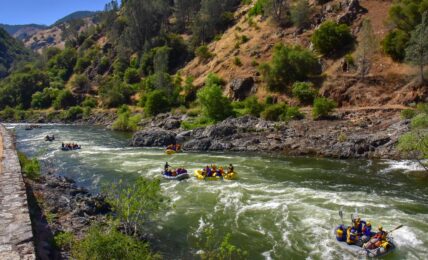
It’s a California you haven’t seen before. It’s Fresno County.
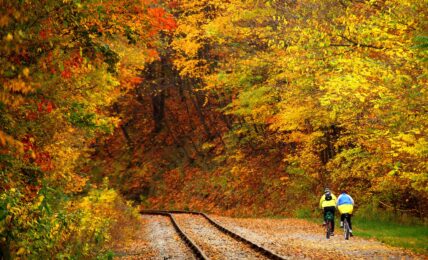
Maryland Is Open For Moments Worth Savoring
Your email address will not be published. Required fields are marked *
Save my name, email, and website in this browser for the next time I comment.
- Project Gutenberg
- 73,748 free eBooks
- 3 by Benjamin Moore Norman
Rambles by Land and Water; or, Notes of Travel in Cuba and Mexico by Norman
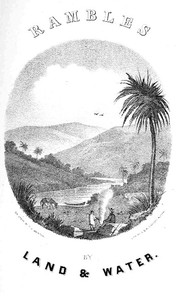
Read now or download (free!)
Similar books, about this ebook.
- Privacy policy
- About Project Gutenberg
- Terms of Use
- Contact Information

- Skip to main content
- Skip to primary sidebar
- Skip to footer
Living Montessori Now
Montessori Inspiration for Parents and Teachers

Montessori Resources for Land, Air, and Water Transportation Activities
January 19, 2018 By Deb Chitwood Leave a Comment
If you have a vehicle lover, you’ll find that vehicles are some of the best tools you can use to teach a wide variety of concepts. They’re great hands-on learning objects for kids who aren’t obsessed with vehicles, too. Land, air, and water sorting is one of the early Montessori geography activities for preschoolers. Land, air, and water transportation sorting is typically one of the most popular land, air, and water activities you’ll prepare.
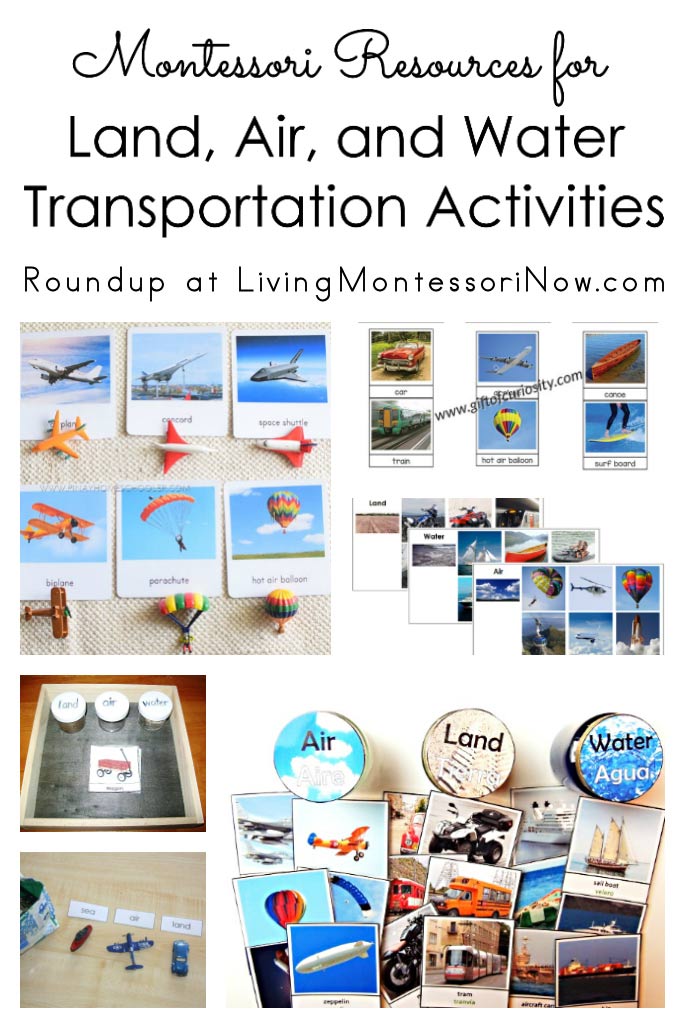
It’s best to start with two introductory Montessori land, air, and water activities before transportation sorting. You’ll find those two lessons in the free geography album by Karen Tyler of KHT Montessori.
If you sign up for my weekly newslette r , you’ll receive the free geography album (and lots of other great freebies)! Starting on page 47 of the album, you’ll find thorough directions for introducing land, air, and water in two separate lessons. Right after those two lessons is a presentation for land, air, and water transportation sorting.
Disclosure: This post contains some affiliate links (at no cost to you).
Montessori Land, Air, and Water Transportation Printables for Activities
Free Transportation Land, Air, and Water Sort by Kristen Campbell on Teachers Pay Teachers
Free Transportation Sort and other Transportation Printables from Totschooling

Land, Air, and Water Transportation Printables
- Modes of Transportation for Land, Air, and Water (available for purchase) from Montessori Print Shop
- Montessori-Inspired Land, Air, and Water Transportation Cards (available for purchase) from The Pinay Homeschooler
- Transportation 3-Part Cards for Land, Air, Water in Bilingual English-Spanish (available for purchase) from Multilingual MontessoriUno Zwei Tutu at Teachers Pay Teachers
- Sorting Land, Air, and Water Transportation Modes (available for purchase) from Gift of Curiosity
- Montessori Land, Air, and Water Sorting Printables (available for purchase) by a variety of sellers on Teachers Pay Teachers
Montessori Land, Water, and Air Transportation Activities

Land and Water Map from Pin It! Maps with Land, Air, and Water Transportation Figures
I have an activity with a land and water map from Pin It! Maps with Land, air, and water transportation figures from Safari Ltd. ( On the Road , In the Sky , and In the Water TOOBS) Note: Pin It! Maps are no longer available, but you can find lots of large pin map options on Etsy .

Land, Air, and Water Transportation Sorting
- Transportation Sorting by Land, Air, Sea from Counting Coconuts
- Land, Air, and Water Vehicles from Every Star Is Different (Go to Free Printables tab at the top of the Every Star Is Different blog, then to Thematic Activities, then to Transportation Activities, and then to the related post.)
Transportation Products for Kids on Amazon
Land, Air, and Water Activities
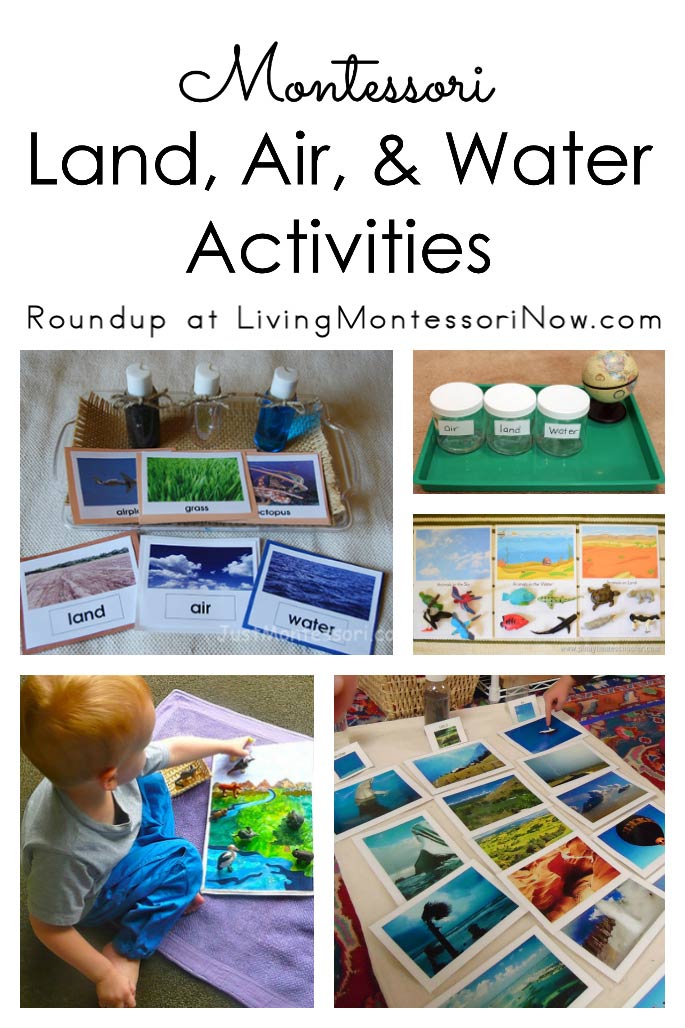
For land, air, and water activities of various kinds, check out my Montessori land, air, and water activities roundup post .

Learn more about my eBook Montessori at Home or School: How to. Teach Grace and Courtesy !
If this is your first time visiting Living Montessori Now, welcome! If you haven’t already, please join us on our Living Montessori Now Facebook page where you’ll find a Free Printable of the Day and lots of inspiration and ideas for parenting and teaching! And please follow me on Instagram , Pinterest (lots of Montessori-, holiday-, and theme-related boards), and YouTube . While you’re here, please check out the Living Montessori Now shop .
And don’t forget one of the best ways to follow me by signing up for my weekly newsletter. You’ll receive some awesome freebies in the process!
Reader Interactions
Leave a reply cancel reply.
Your email address will not be published. Required fields are marked *
Connect with LMN
Supervision
You can also find me.

Subscribe by Email

A Lifeline Between Land and Water
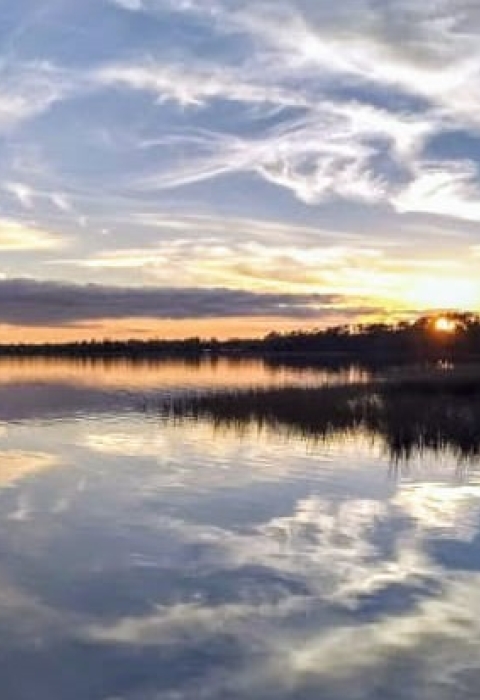
Supporting Resilient Coastlines
Living shorelines play a vital role in conserving and enhancing coastal wildlife by offering a range of habitats, supporting biodiversity, and improving water quality. Living shorelines are critically important in coastal communities, as they provide a sustainable and environmentally friendly solution to the challenges posed by coastal erosion and changing climate conditions. Unlike traditional hard structures like seawalls, living shorelines use natural materials like plants, oysters, and marsh grasses to stabilize the shoreline and protect against erosion. They not only safeguard the coastline but also promote biodiversity, improve water quality, and enhance the resilience of coastal ecosystems. Living shorelines can be cost-effective and aesthetically pleasing, which is beneficial for both the environment and the communities that depend on healthy coastlines for their well-being and livelihoods.
Roaring Sea Project in Blackwater Bay
The Panama City Fish and Wildlife Conservation Office partnered with a local landowner and Florida Department of Environmental Protection to restore over 100 linear feet of shoreline habitat at the Roaring Sea site in Blackwater Bay near Milton, Florida. Project Leader Chris Metcalf, Fish Biologist Andy Hartzog, and Biological Science Technician Jake Roush collaborated with Zach Schang (Florida Department of Environmental Protection, Office of Resilience and Coastal Protection) to partially fund and assist with deployment of the living shoreline project. The Roaring Sea project consisted of building four offshore oyster reef breaks constructed from a limestone base and recycled oyster shell material placed in a crescent shape. This site has endured over fifty feet of shoreline erosion in the previous five years from hurricanes and severe storm events. Several projects have been implemented in the Blackwater Bay area over the past few years to support stabilization of the coastline, including upland and adjacent wetland restoration.

Importance of Transitional Habitat Zones
Coastal ecosystems are a transitional zone between the land and water and provide habitat for a variety of species, including fish, crustaceans, birds, and mammals. Marsh grasses, submerged vegetation, and oyster reefs offer shelter, breeding grounds, and foraging opportunities for a wide range of terrestrial and aquatic species. Many fish and invertebrates use living shorelines as nursery areas for their young. The protective and productive nature of these habitats makes them ideal for the early life stages, contributing to healthy fish populations. Living shorelines help protect adjacent wetlands and coastal habitats by stabilizing the shoreline and preventing erosion from harsh weather events, ensuring habitat longevity and the survival of native wildlife. Coastal habitat restoration projects in Florida's Gulf Coast region are critical for the protection and recovery of native species and maintenance of natural ecosystems in an ever-changing environment.
Featured in the Story
Latest stories.

You are exiting the U.S. Fish and Wildlife Service website
You are being directed to
We do not guarantee that the websites we link to comply with Section 508 (Accessibility Requirements) of the Rehabilitation Act. Links also do not constitute endorsement, recommendation, or favoring by the U.S. Fish and Wildlife Service.

An official website of the United States government
Here’s how you know

Official websites use .gov A .gov website belongs to an official government organization in the United States.
Secure .gov websites use HTTPS A lock ( Lock A locked padlock ) or https:// means you’ve safely connected to the .gov website. Share sensitive information only on official, secure websites.

Mobile Apps Directory
U.S. Customs and Border Protection (CBP) offers a suite of mobile applications (apps) to help expedite the travel process when entering the United States, help customs brokers facilitate import inspections.
CBP One™ Mobile Application
A single portal for multiple CBP services to streamline your experience.
- Mobile Passport Control
CBP’s MPC app is a free application that can be downloaded from the Apple App store and Google Play and is currently available for eligible travelers to use upon arrival at MPC approved sites.
CBP Warns about an Ongoing Phone Scam
CBP does not solicit money or payment over the phone. Hang up, it's a scam!
For U.S. Citizens/Lawful Permanent Residents
Uscis extends green card validity extension to 24 months for green card renewals.
You may show your expired green card and your receipt notice as evidence of continued status or valid passport that contains a valid USCIS ADIT Stamp or valid USCIS Form I-94 with ADIT stamp, DHS seal, and printed photo of the LPR (aka USCIS Mail Delivery Process) to return back into the United States . NOTE: We have no authority to claim that this is sufficient evidence to gain entry to other countries if/when there is a departure from the USA.
If you are a U.S. citizen traveling abroad, get the information you need to smoothly navigate your return back into the United States, including:
- Automated Passport Control
- Bringing Food into the United States
- Customs Declaration Form (6059B)
- Planning a Trip to Mexico from the United States
- Planning to Travel Abroad
- Western Hemisphere Travel Initiative
- CBP Mobile App Directory
If you are a lawful permanent resident, you may be eligible to become a U.S. citizen after five years of becoming a lawful permanent resident, or three years if you are married to a U.S. citizen. More information on the naturalization process and available citizenship materials can be found at the Citizenship Resource Center .
Travel Videos for U.S. Citizens
Know before you go video.

Meet Kate and find out all you need to do to make your return to the U.S. easy and quick!
You've Arrived Video
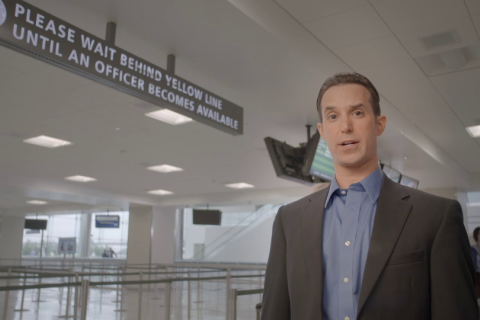
How to streamline the entry process so you can reach your final destination faster.
How to Expedite Your Entry Video

Innovative new technologies simplify processing international travelers.
Information for Lawful Permanent Residents
- Advance Parole
- Advance Parole, Reentry Permit, and Refugee Travel Documentation for returning Aliens residing in the U.S.
- USCIS Citizenship Resource Center
Resources for Study Abroad Students
- CBP Shares Travel Tips for Study Abroad Students
- Study Abroad Students Can Help Protect the Safety of the U.S. Food Supply and Native Animal Species
Gadgets, apps and packing tips: Travel writers' must haves on every trip
"Easy Travel” is a 10-part series focusing on how to reduce bumps during vacations, anticipate roadblocks and be ready when things aren’t going your way. If you'd like to contribute to our future reporting and share your experience as a source, you can click here to fill out this quick form .
If you only travel a few times a year, it can be a little overwhelming. There are weird regulations and lots of different lines in the airport. Hotels and rental cars can have lots of confusing terms and conditions attached to booking, and going somewhere unfamiliar can be disorienting.
But there are plenty of products out there designed to help make it all less stressful. I talked to my colleague Wilson Santiago Burgos, founder of Mochileando.com and regular contributor here at USA TODAY. We brainstormed some of our must-have apps, gadgets and credit cards for when we’re on the road.
Here’s what we came up with.
What are some good travel apps?
Santiago said Google Flights is his go-to site for searching for the best deals, and added that it’s a good idea to research which platforms typically have the best hotel offerings in different regions.
Learn more: Best travel insurance
He said Expedia is a good app in the U.S., but if you’re traveling to Asia, Booking and Agoda are the best.
Keep in mind that third-party booking platforms like Orbitz, Kayak and the rest may have good deals, but can also be more complicated to deal with if something goes wrong, like a flight delay or cancellation. Just make sure you double-check the terms and conditions if you don’t book directly with the hotel or airline.
I’m pretty simple when it comes to the actual travel day: I typically just download the airline app for whatever carrier I’m flying and make sure to stay up to date on any changes to my itinerary. FlightRadar24 and FlightAware are helpful for that, too, and I know many other travel professionals who say the Flighty app is a big help on their own trips.
Here are some of Travel + Leisure’s top-ranked free travel apps :
- PackPoint : an easy way to make a checklist, as Santiago recommended.
- Dayuse.com: Search for hotel rooms that are available for odd-timed stays on long layovers.
- GasBuddy : Find the cheapest gas prices for your road trip.
- Eatwith : Grab a meal with locals and make new connections while you travel.
- Flush : for when you need to find a toilet.
Make travel easy: We tested ChatGPT itineraries in 5 US tourist spots
What items do people need when traveling?
All the typical tech advice applies: having a smartphone with you can be a big help, not just for things like airplane boarding passes and mobile room keys, but also for keeping connected while you’re on the go.
“If you are traveling internationally, it’s very important to check if you have roaming. If you don’t have roaming, I recommend buying an electronic SIM card,” Santiago said. He added that an external power pack, AC adaptors for international destinations, and his tablet and laptop are also on his list.
Even if you don’t have roaming service, you can download sections of Google Maps for offline use, which can be a big help if you’re navigating an unfamiliar city without cellphone service. Not all of the features are available in offline mode, but you can at least use the basic GPS functions to orient yourself.
Here are some of the best gadgets to have with you when you travel, according to Travel + Leisure :
- Tile or Apple AirTag: to keep track of your luggage .
- Noise-canceling headphones: Find the ones that you like the best and tune out those screaming children.
- Tablets and e-readers.
- An external power pack.
- Universal charging cables.
- Power adapters.
How do you pack things for a trip?
It’s always a good idea to keep essentials with you in your carry-on. Things like medicine and at least a day’s worth of clothes, maybe two days', in case something goes awry with your trip. Of course, chargers are a good thing to bring with you as well, and most airlines prohibit many electronics from traveling in checked bags these days because of the fire risk they present.
“I recommend everybody should use a checklist every time you travel to make sure you travel,” Santiago said, noting that writing down what you need ahead of time is a good way to ensure you don’t forget anything.
Flying with breast milk or formula?: Don't worry about liquid limits. Here's what to know.
Which credit card to use for travel?
Many credit cards are designed for frequent travelers and come with perks like lounge access, compensation or waived fees, and even cover registration for programs like Global Entry, TSA Precheck and Clear.
Some of the high-end credit cards like the Amex Platinum or Chase Sapphire Reserve have annual fees that run hundreds of dollars, but there are less expensive cards meant for more infrequent travelers that have perks like no foreign transaction fees or bonus points for booking travel.
The easiest reward program? What to know about Expedia Group's new One Key loyalty program
“There is not (one) best credit card for travel, there are different credit cards for different kinds of travelers, and you should find the best option for you,” Santiago said.
He added, though, that enrolling in Precheck and Global Entry is a good idea even for infrequent travelers, so it’s worth considering exploring cards that include that benefit.
“If you have TSA Precheck and Global Entry, use the program to travel because you will save a lot of time at the airports,” he said.
What is your best travel hack?
Zach Wichter is a travel reporter for USA TODAY based in New York. You can reach him at [email protected] .

IMAGES
VIDEO
COMMENTS
At a Glance. Embark on the ultimate African safari by land and water on this incredible learning adventure in the heart of Zimbabwe, Namibia and Botswana. Beginning in Zimbabwe, admire the majesty of Victoria Falls, meet locals at grassroots community projects and explore Hwange National Park in search of lions, leopards, wild dogs and cheetahs.
Located in Alaska's Inside Passage, Glacier Bay National Park and Preserve is a bucket list destination best viewed from its icy glacier waters. Much of the vast interior of the park's 3.3 million acres is composed of water and mountains covered in dense rainforest — and most of it is not accessible by road or hiking paths — so the ideal ...
Adventure travel logs across and within continents by land (biking etc), water (kayaking etc), and air (paragliding etc)
Seamless transition from land to water on a unique floating bus tour in Budapest. Live guides provide historical insights while exploring major sights from an air-conditioned coach. Enjoy a comfortable and exciting exploration of Budapest from both land and the River Danube. Must-do experience offering a different perspective of the city's ...
Hovercraft. A hovercraft is one of a few types of water transport which can also travel over land, through mud and on ice. They use special blowers in order to produce a large volume of air under the hull which is slightly above atmospheric pressure - this lifts the vessel allowing it to move. They have many uses.
Jazz on the Water by land and by sea... A passion project, Jazz on the Water brings jazz artists to the San Antonio metro area as well as specialty cruises and events. Find out more here Individual Trip Planning We focus on custom travel designed for you. From weekend getaways to bucket list trips, we work directly with you to create ...
Croatia By Land and Sea - Best Combo! 1-800-818-8015. 1-310-684-3840. USA: 78365 Highway 111, Suite 191, La Quinta CA 92253. [email protected].
Explore Florida's "River of Grass" by land and water for a unique adventure in a subtropical wilderness. Flocks of white ibis roost in tangled mangroves. Marshmallow clouds reflect upon a blue bay ...
Travel by land and by water developed in response to local geographic and environmental features. In ancient Greece, for example, city-states were separated by mountain ranges, making land travel ...
The Kimberley is one of Australia's last frontiers - a stunning wilderness filled with ancient landscapes. And there are two ways to see it that are both very different. Adventurous travellers will find the Kimberley region hard to resist. Its gorges snake towards the ocean fed by some of the highest, most voluminous waterfalls in the land.
Alaska by Land or Sea. The 49th state is abundant in soaring mountains, thriving wildlife, bright summer skies, Indigenous culture and endless wide-open spaces waiting to be explored. Alaska's big backyard awakens travelers' sense of adventure as cities seamlessly blend into nature. There's no time like the present to start planning the ...
Alaska Cruisetours. An Alaska cruisetour is our award-winning cruise through Alaska's Inside Passage paired with a scenic train ride into Interior Alaska, plus up to 3 nights at McKinley Chalet Resort, our immersive lodge at the gates of Denali National Park. If you choose, continue the journey into the Yukon on your Alaska cruisetour.
Maximize your time in Ottawa and Gatineau on a whirlwind sightseeing tour by land and water, all in an amphibious vehicle. Aboard your "amphibus," you'll pass main city attractions like Parliament Hill, Notre Dame Basilica, the National War Memorial Monument, and more. When cruising along the street gets dry, plunge into the Ottawa River to see the city from a different angle.
Package Detail. Tour ID 122. Price From $3,881 + Tax. Duration 9 Days / 8 Nights. Start / End Anchorage / Anchorage. Departure Dates Daily from 5/19/2024 to 9/2/2024. Travel By Train, Motorcoach. Tour Type Self Guided. Destinations Anchorage, Denali Park, Talkeetna, Seward.
Rambles by land and water, or, Notes of travel in Cuba and Mexico [microform] : including a canoe voyage up the river Panuco, and researches among the ruins of Tamaulipas by Norman, Benjamin Moore, 1809-1860. Publication date 1845 Publisher New-York : Paine & Burgess Collection americana Book from the collections of
The Department of Natural Resources permits and manages off-road travel. This includes ice road construction, winter travel without ice roads, and summer travel using specialized, low impact vehicles. State lands within the Umiat Meridian are designated special use land (ADL 50666) pursuant to 11 AAC 96.014 (b). This designation specifies that ...
Travel by land or water. As per the Western Hemisphere Travel Initiative (WHTI), Canadian citizens aged 16 years and older must present one of the following documents when entering the United States by land or water: a valid passport; a Trusted Traveler Program card
Educational video for children teaching them vocabulary related with land, water and air transport. This video recopilation includes means of transport like ...
Taking a satellite view and looking down at the earth, Lake Barkley serves as the easternmost border of the Land Between the Lakes National Recreation Area. This "water playground," also known as Lake Barkley, features sandy beaches and more, making it an ideal spot for summer visitors. Water skiers, wave-makers, jet skiers, wave borders ...
Norman, Benjamin Moore, 1809-1860. LoC No. 02009630. Title. Rambles by Land and Water; or, Notes of Travel in Cuba and Mexico. Credits. Produced by Julia Miller, Josephine Paolucci and the Online. Distributed Proofreading Team at https: //www.pgdp.net.
Land, air, and water transportation sorting is typically one of the most popular land, air, and water activities you'll prepare. It's best to start with two introductory Montessori land, air, and water activities before transportation sorting. You'll find those two lessons in the free geography album by Karen Tyler of KHT Montessori.
Coastal ecosystems are a transitional zone between the land and water and provide habitat for a variety of species, including fish, crustaceans, birds, and mammals. Marsh grasses, submerged vegetation, and oyster reefs offer shelter, breeding grounds, and foraging opportunities for a wide range of terrestrial and aquatic species. ...
Oregon Coast. Discover the Oregon Coast's rocky vistas, miles of public beaches, artistic enclaves, fishing towns, family attractions, microbrews, seafood and surfing. Lined by Highway 101 to the east and the Pacific Ocean to the west, the Oregon Coast is 363 miles (584 km) of rugged shoreline, where tide pools and hiking trails share sunsets ...
CBP Mobile App Directory. If you are a lawful permanent resident, you may be eligible to become a U.S. citizen after five years of becoming a lawful permanent resident, or three years if you are married to a U.S. citizen. More information on the naturalization process and available citizenship materials can be found at the Citizenship Resource ...
Travel Insurance Outlook For 2024. Increasing trip costs and flight delays top the list of concerns for many vacationers, and these worries are likely to continue plaguing travelers in 2024.The ...
Land Ark RV. The 26.8-foot (8.2-m) Travel Trailer rides on 34-in all-terrain tires cushioned by a dual axle-less independent suspension. Initial estimates put dry weight at 6,500 lb (2,948 kg ...
Tile or Apple AirTag: to keep track of your luggage. Noise-canceling headphones: Find the ones that you like the best and tune out those screaming children. Tablets and e-readers. An external ...
About Adygeya. Adygeya (other spellings Adygea, Adyge, Adyghea) Republic is a federal subject of the Russian Federation, part of Southern Federal District. The administrative center of the region is Maykop. The republic is an enclave within Krasnodar Krai. Adygeya Republic has a population of about 444,000 (2012) on the territory of 7,792 sq. km.
Starobzhegokay ( Russian: Старобжегокай; Adyghe: Бжыхьэкъоежъ) is a rural locality (an aul) and the administrative center of Starobzhegokayskoye Rural Settlement of Takhtamukaysky District, the Republic of Adygea, Russia. The population was 2509 as of 2018. [2] There are 79 streets.
Republic of Adygea, Starobzhegokay in Yandex Maps: get driving and public transport directions, easily find and select locations based on ratings and reviews.